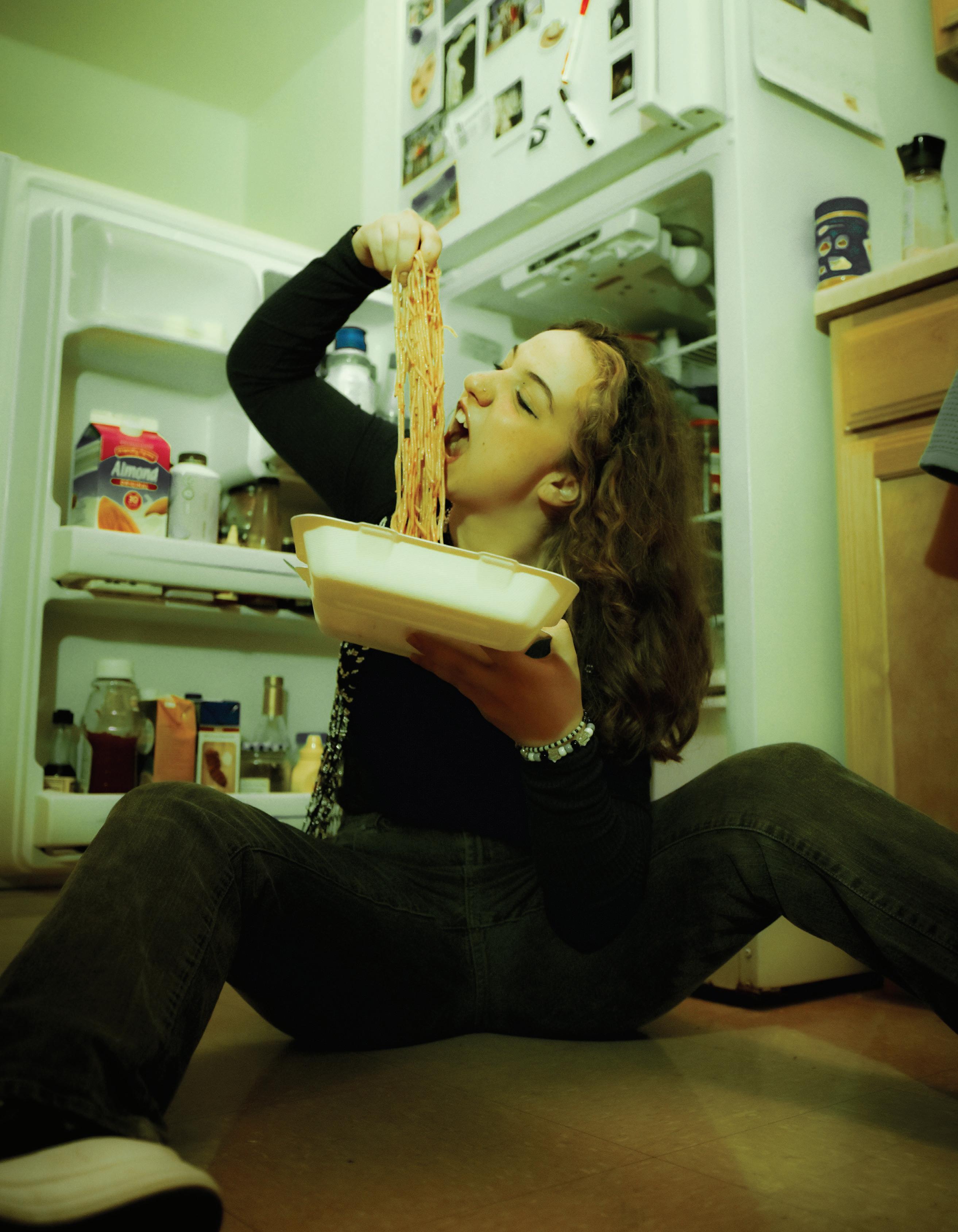

























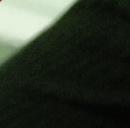
34 Art of The Boycotts: The Power of the Non-Consumer Venturing Beyond the Purchases of Consumerism
22 Digesting ‘Girl Dinner’: The Dish for Community An Exploration of the Online Trend
08 Shop Smarter, Not Harder
Thrift Shopping With an Environmental Twist
Spring 2024 Issue I
EPORTER THE



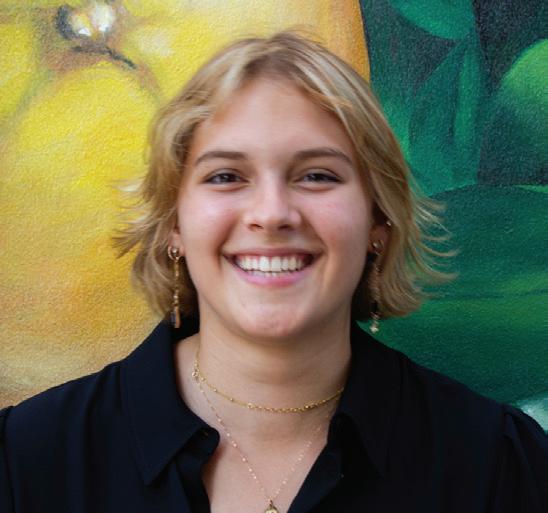












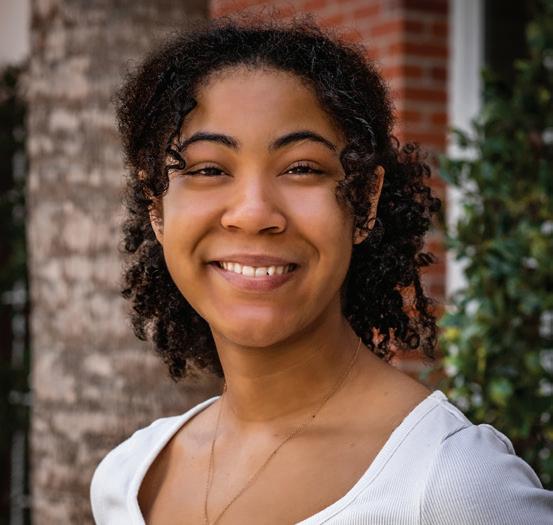




















































































 Cas Bradley Editor-in-Chief
Alis Cadena Executive Editor
Carlye Mahler Managing Editor
Reagan Shivers News Editor
Hayle Morgan Fact Checker
Hayden Collins Creative Director
Cas Bradley Editor-in-Chief
Alis Cadena Executive Editor
Carlye Mahler Managing Editor
Reagan Shivers News Editor
Hayle Morgan Fact Checker
Hayden Collins Creative Director
4 the reporter
Sisi Small Webmaster
EDITORS EDITORS









What are your ins-and-outs?

staff
Cas Bradley, Editor-in-Chief
Hayden Collins, Creative Director


Alis Cadena, Executive Editor of The Reporter
Carlye Mahler, Managing Editor of The Reporter

In, library card and out, Audible

Reagan Shivers, News Editor of The Reporter
Ciara Kelley, Arts & Culture Editor
Venus Turnbull, Creative Staff
Maria Latour, Creative Staff
Cristal Sherman, Creative Staff
Michelle Marshall, Creative Staff
Maria Latour, Creative Staff
Emy Acosta, Photo Editor
Indya Mkcoy, Photographer
Brooke O’Brien, Social Media Director

Sisi Small, Webmaster
In, 3-in-1 Lego set, Out 3-in-1 body wash




Brandy Bennet, Staff Writer

In, cooking more, out– takeout



Carla Rosario, Staff Writer



Lili Sheridan, Staff Writer





Sara Ward, Staff Writer


Lanajae Gaffney, Staff Writer
Iris Hunt, Staff Writer




























Abigail Denton, Staff Writer



Emma Weiss, Staff Writer

In, night classes, out morning classes Weiss,

Alondra Y Rivas-Jimenez, Staff Writer





De’Vanese John-Baptiste, Staff Writer
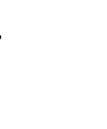



Hayle Morgan, Copy Editor










In, black beans, out is beef







JOINING US ABOUT US





REPORTER THE EDITORS

When it comes to joining Hatter Network, we are never not excited about someone wanting to join our ranks. If you want to write, The Reporter is the place. If you like to appreciate art, music and writing, Touchstone Literary Arts Journal is where it’s at. If you want to create your own podcast, or learn how to use the tech in our radio station, WHAT Radio is there. Hatter Network is an extacurricular media program run by students, for students, to provide them with the information we think they need to know, or an outlet for their creative endeavors. If you’re interesed in getting involved, please email our Editor-in-Chief, Cas Bradley, at cabradley@stetson.edu or apply on Engage.





The Reporter, as part of Hatter Network, is the oldest collegiate magazine in the state of Florida. We publish four times per year, twice per semester. Florida Sun Printing prints 300 copies per issue on 8.5 x 11 inch, 80# Gloss Test, Most body text is set at 11 pound Adobe Garamond Pro or Times New Roman with 13 point leading set with a combination of regular, italic and bold. All pages are designed using Adobe Creative Suite Photoshop and Illustrator. For additional information please visit hatternetwork.com. Questions or concerns can be mailed to 421 N Woodland Blvd. Deland, FL 32723 or emailed to hatternetwork@gmail.com.
the reporter 5
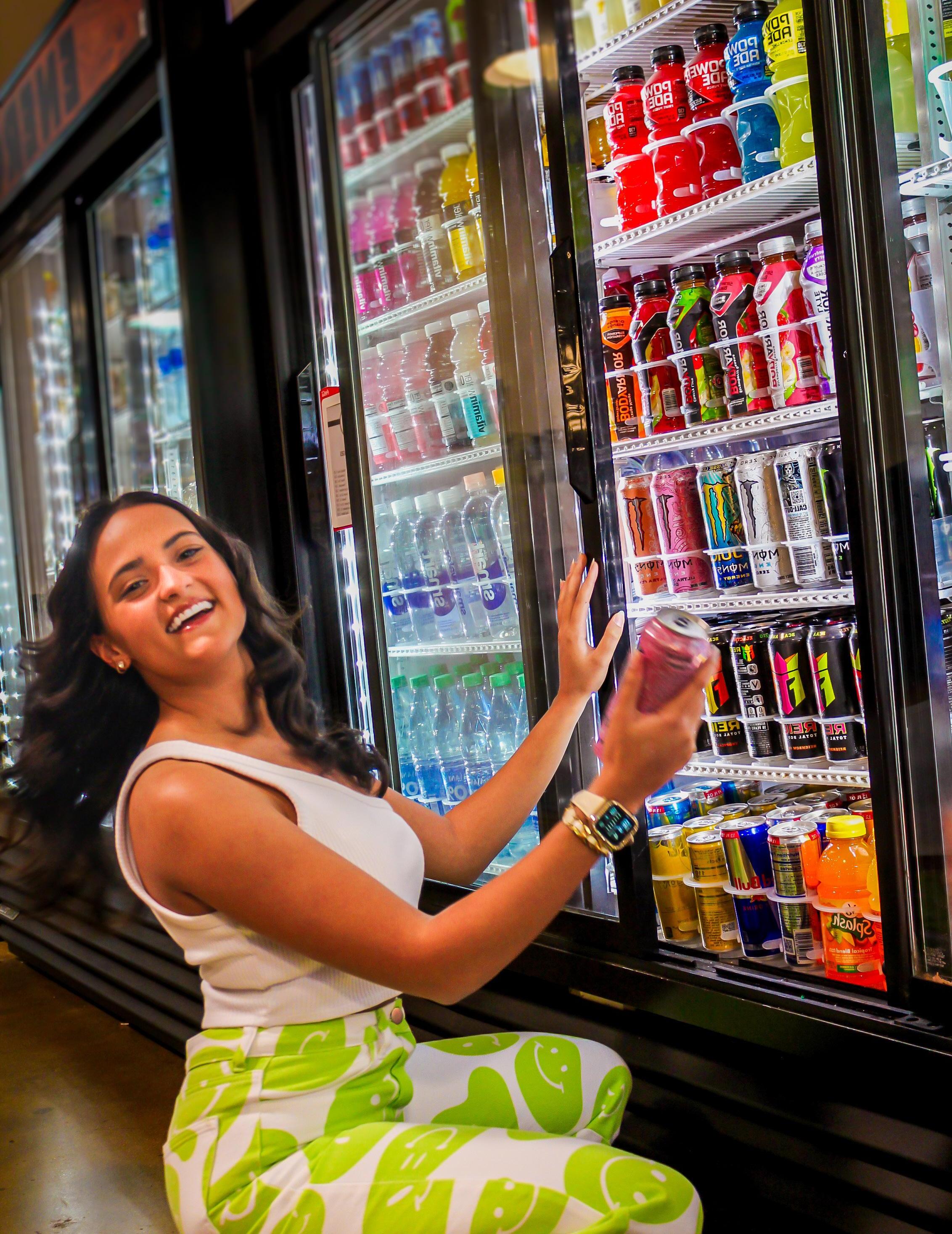 Left: Jasmine Bakhsh (’26)
Left: Jasmine Bakhsh (’26)
contents
Farmers A That’s Corner
Cover: Lili Sheridan (’24), Ciara Kelley (’24) Alex Fisher (’26), Emma Floyd (’26)
Artisan
6 the reporter
contents

14
Artisan Alley Farmers Market
A Perfect Place to Shop That’s Right Around the Corner
08
11
14
18
22 26 29
31
34
38
Shop Smarter, Not Harder Thrift Shopping With an Environmental Twist
Music Industry and Stetson’s Consumption From Creators to Consumers: Modern Beats
Artisan Alley Farmers Market
A Perfect Place to Shop That’s Right Around the Corner
Ampersand
Meet Dr. Sarah Cramer, Assistant Professor of the Sustainable Food Systems program
Digesting ‘Girl Dinner’: The Dish for Community An Exploration of the Online Trend
Unpacked with Dr. Tom Vogel
Where Numbers Meet Well-Being: Dr. Vogel’s Equation for a Balanced Life
Dear Reader Segment
Words of Wisdom from the Reporter Staff
Finding Connection Beyond Likes: My Journey with Lapse
Shuffling into the Unknown: A Post with Zero Likes
Art of The Boycotts: The Power of the Non-Consumer Venturing Beyond the Purchases of Consumerism
Playlist Bop n’ Shop
the reporter 7
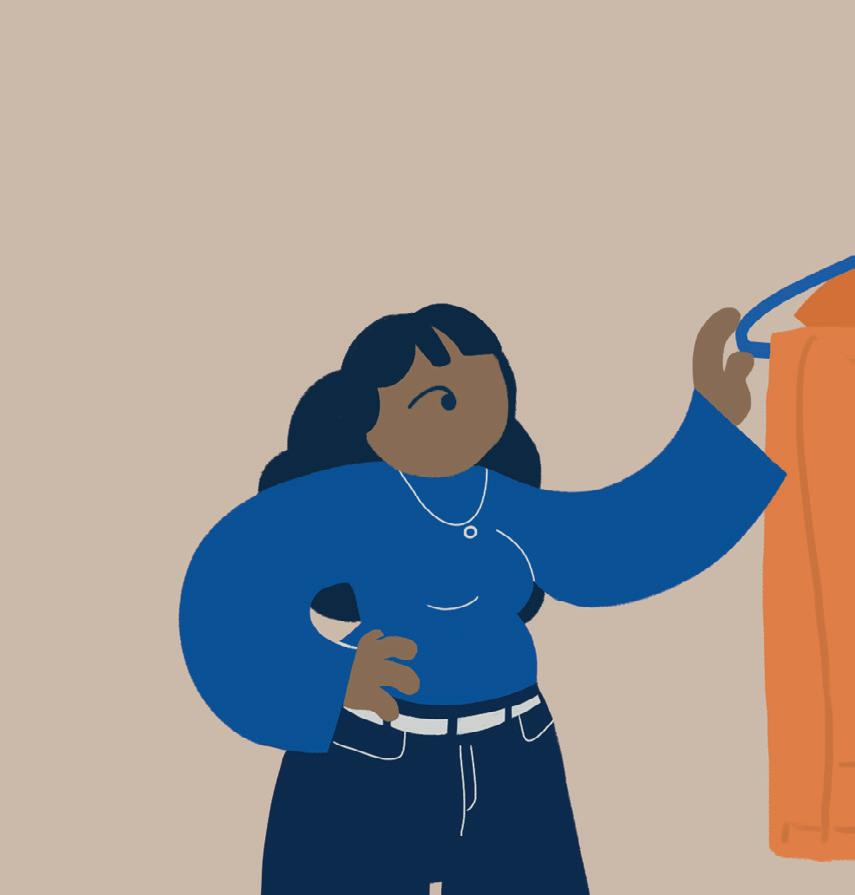

 Written by Sara Ward
Designed by Maria Latour
Written by Sara Ward
Designed by Maria Latour
Sma er Not Shop

Harder
Hey, Macklem e, can we go t ift shopping?
In Macklemore and Robert Lewis’ 2012 hit Thrift Shop feat Wanz, the pair rap about their thrifting experience when they “Only got $20 in [their] pocket[s].” Though a humorous piece of music meant for entertainment, this line still holds truth. Eleven years later, this song reflects the ever-growing cultural movement to thrift.
Throughout the fashion industry and social media, there is a growing movement against fast fashion. Companies such as Shein- known for their low prices- are being ridiculed for the low-quality products manufactured without regard for human and environmental factors.
With that being said, tuition is not cheap. Textbooks need to be purchased, and we still need to eat. But this doesn’t mean that we can’t have style. Despite these challenges, Stetson students are working to be smarter, more environmental-
8 the reporter
ly cautious shoppers through various ways of thrifting.

Take the Hatter Closet for example. Classmates Avery Brooks ’25, Darbi Robbins ’26 and Mary-Kate Hoang ’26 bonded during their Honors 102 project last year. This project is required for students of the Honors College, to prepare students to become agents of change who have the attitudes, knowledge and skills to collectively address the complex challenges facing our communities. These students started with a problem- the laundry left behind in residential halls. There were piles of laundry consisting of clothes that were just going to end up in the trash, never to be worn again.
“So me being into environmental science, I really wanted to get involved with hopefully reducing clothing waste,” Brooks explained. “It puts a lot of toxins into our environment. “
8 the reporter
Microplastics from clothing get into the environment when it gets into landfills.”
In addition to helping the environment and cleaning up the fashion industry, they wanted to be able to give back to the local community as well. With the help of Stetson Director of Community Engagement Kevin Winchell, they partnered with the Neighborhood Center West Volusia, a nonprofit that works to feed the hungry and tackle the core issues that lead to unhoused individuals.
“They were happy to work with us and they accept clothing donations, but also, more importantly, funding for their projects for the homeless,” Brooks said enthusiastically. “We wanted to help them out.”

The team worked with permission from Residential Living and Learning (RL&L) to gather the leftover clothes in the laundry rooms. Holding a donation day was yet another way the students brainstormed to gather more clothes. Additionally, they received access to the golf cart for transportation, washed the clothes and marketed their store. On September 5 and 6, Avery, Darbi and Mary-Kate were officially the creators of a successful pop-up thrift store. Hatter Closet took place in the Carlton Union Building (CUB) where most of their customer base were Stetson students. $1500 was the grand total raised for the Neighborhood Center. The money raised went to a good cause, and the pop-up shop helped foster a sense of sustainability on campus.
“I bought a pair of L.L. Bean running shorts,” Kristine Lynn Rodriguez ’25 said. “I am so
elated to hear that these clothing items have an opportunity to be loved once more and that they aren’t going to waste.”
Brooks shared that they hope to make the Hatter Closet an annual event. The team is working on setting up a potential long-term plan to keep it running after they graduate. With continued partnership from RL&L, they also worked with Kevin Winchell who works in community engagement, to ensure the project can be run each year.
The Hatter Closet isn’t the only way Stetson students are changing the sustainable fashion game. Nathan Boyd ’24 is another example. Boyd is the Chief Executive Officer (CEO) of his own small business, Sicc Printing. He specializes in commercial printing and embroidery services.
Now a college senior, Boyd works to repurpose vintage clothes from thrift stores as an environmentally cautious option for his customers. He told me it all started when he was a high school senior. He started selling sneakers, vintage clothing and other collectibles he found at thrift shops that he could flip for a profit.
“Basically, I started as soon as high school ended, like graduation, next week, I did an event,” Boyd said. “Then that entire summer just kept doing events. And then I went to Stetson.”
A year into his Stetson education, he made his first shirt. He started like many young entrepreneurs, in his garage, where he only had four color presses (meaning four different ink colors
Hatter Cl o set took plac e i n the Carlton U nion Building (CUB) wh e most of the custom base w e Stetson students. $1,500 was the and total raised f the Neighb hoodCent .
“ the reporter 9
the reporter 9
“
“are used to create a range of printable colors). Now, Boyd is purchasing a screen printing company in Daytona called USA Printing. With the acquisition of this company, Boyd will have an automatic press which will allow him to produce 20 shirts per hour.
As a small-business owner, Boyd focuses on his environmental impact. Popular thrift shop, Goodwill reports that it offers many opportunities for the clothes to be resold, although roughly five percent of donated clothes are directly sent to landfills. Boyd saves these clothes from thrift shops that don’t get bought up.
“What we like to do is we like to repurpose those things,” Boyd nodded while saying. “So getting a vintage blank from the 90s and having nothing on it or having something already on it, then printing over it. Offering that to customers is great because it’s just, it’s more unique.”
According to the European Parliament, the printing industry is responsible for about 10% of the global carbon dioxide gasses that get emitted. Boyd made his business more eco-friendly by changing the traditional plastisol inks to water-based inks. Water-based inks are Polyvinyl chloride (PVC) free, meaning they contain dangerous chemical additives including phthalates, lead, cadmium and organotins.
plastic and is not biodegradable. According to the U.S. Environmental Protection Agency, when this fabric is sent to a landfill, the toxic materials used during the production process leach into the soil and contaminate the water of the local population by these water bodies.
“Polyester is like the worst,” Boyd said. “We try and stay away from that because of how bad it is. But you know, the customer wants what the customer wants, we can only advise them so far, but [we use more] organic materials like bamboo, hemp and different recycled [fabrics].”
These Stetson students from the Hatter Closet and Sicc Printing are working towards the improvement of both the environment and the community– and they’re not alone. You don’t need a project or a business to decrease your ecological footprint. By reusing clothes, thrifting and helping out students like Avery, Darbi, Mary-Kate and Nathan, we can come together to make Stetson a better place, one environmentally sourced clothing item at a time.
the inting indus y is responsible f about 10% ofthe global c bon dioxide gasses that get emitte
“It’s better for the shop environment basically because less chemicals are used to make the ink,” Boyd said. “[We’re environmentally friendly by using] water-based ink, vintage blanks, reusing old blanks or just shirt garments.”
Additionally, Boyd pays extra attention to the fabrics that they print on. Polyester is made of
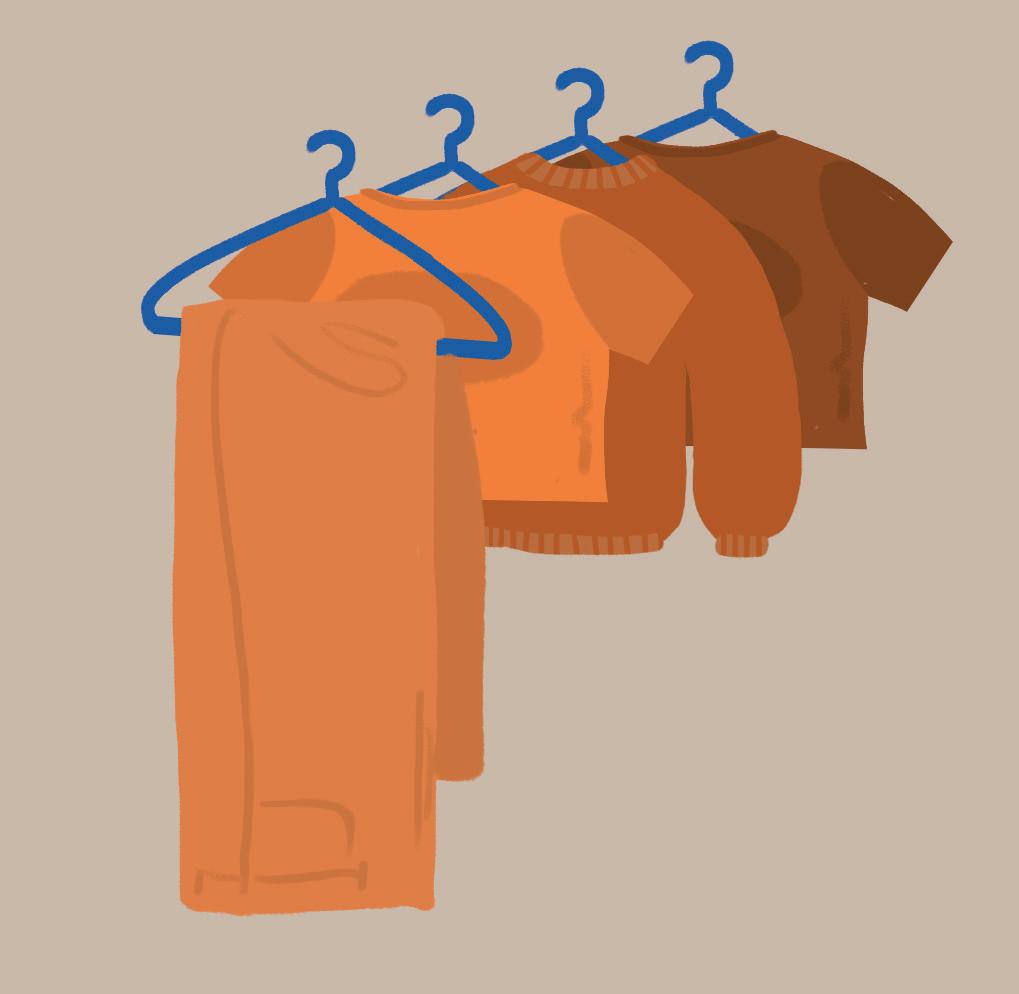
10 the reporter
Sicc Printing Instagram: @siccprinting Website: www.siccprinting.com
d
10 the reporter












MusicStetson’sIndustry Consumption & &















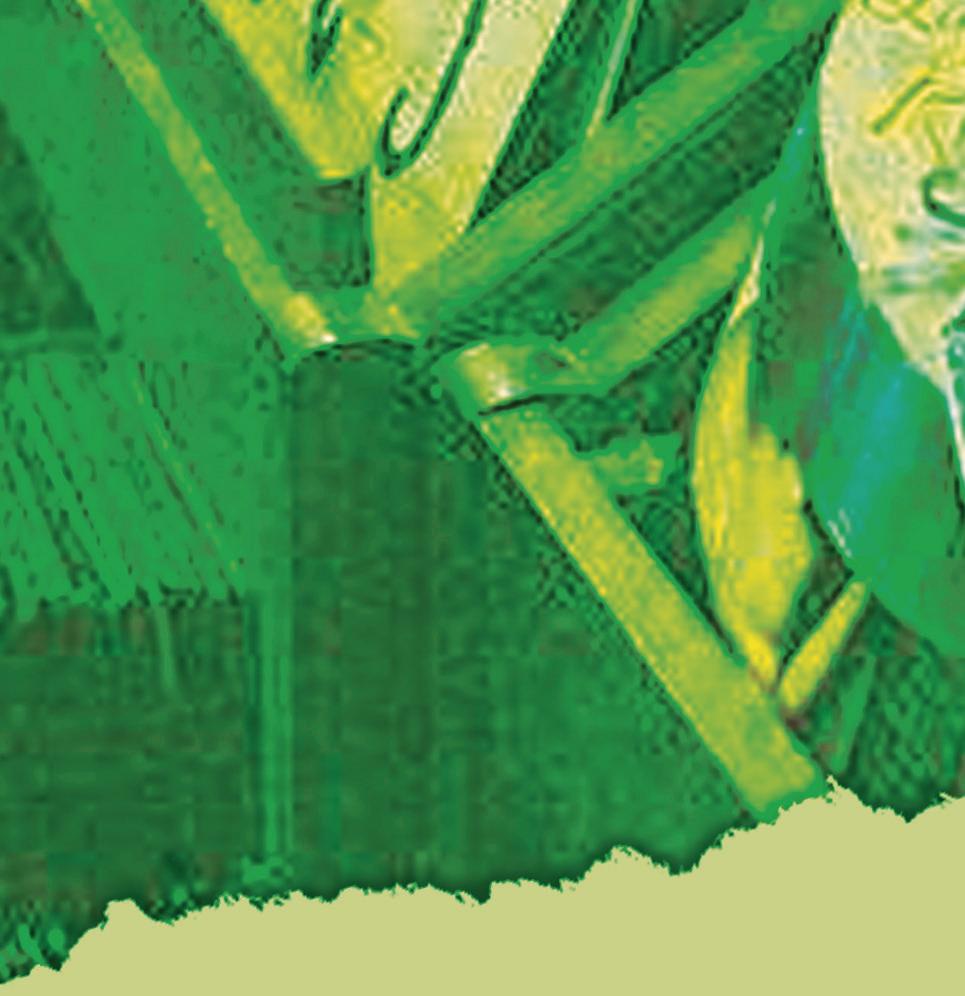


the reporter 11
Written by Carla Rosario
Layout by Hayden Collins Graphics by Cristal Sherman
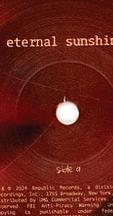
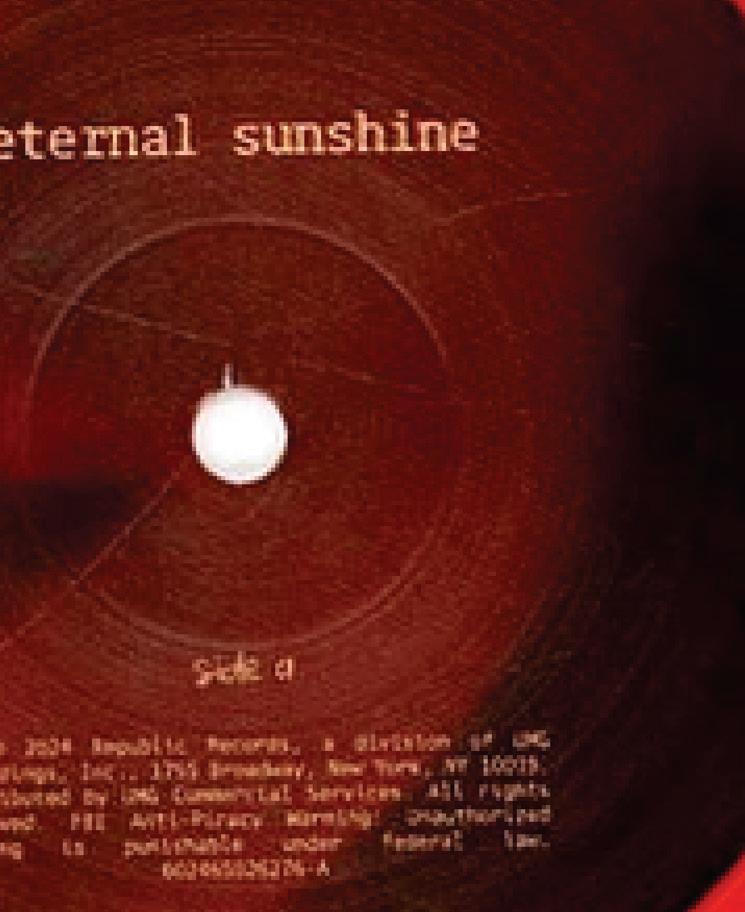
For at least 4000 years, there are historical records of the existence of music. From its beginning, it has evolved not only as a form of art but also eventually into the leading entertainment market. In 2022, the music industry had a revenue of $26.2 billion, 67.0% of that cut coming from digital streaming platforms according to the International Federation of the Phonographic Industry (IFPI).
In a survey done on campus, 94.1% of the students who filled the survey listen to music every day, which is not a surprise. Everytime you walk around campus you can see students doing homework or just sitting in the grass with headphones. 76.5% of said students listen to music on Spotify, and only 5.9% answered that they listen to music on physical copies in addition to Spotify and YouTube. The way musicians have made a living has been changing along with the technological advances, but also alongside the growth of their individual fanbases– and the advances of the music industry extend beyond just streaming.

Streaming isn’t the only thing that changed the way we consume music– social media has influenced us more than we probably are even aware. We see this when we get a YouTube advertisement with a recommendation of a song that is a part of the whole video clip with no form of publicity. 70.6% of the students polled marked down that they have bought a song or album based on a social media recommendation, and 35.3% said that they find promotional content on social media influential in their decision to listen to an artist’s music.
Social media has become the number one way of promoting new releases and concerts. According to the IFPI, record labels spend $5.8 billion on marketing and A&R, which is the division in charge of overseeing the development and engagement of artists. Musicians are becoming influencers; doing paid promotions as public figures, as well as getting paid for ads using their music. Music student Alexander Ortiz-Velez ’24 said that
To better understand how exactly these changes are developing, I interviewed Stetson Adjunct Professor, Jon Oxford, who is a guitarist, composer and member of the Jazz Band. According to Oxford, the streaming platforms


outlet to reach audiences that are limited in some way.”




specific artists now because I can reach them through it [social media], I can get a lot of examples that I could not have gotten other-


Streaming, social media and the advances in technology have become a great tool for musicians to reach new audiences and have multiple sources of revenue. Though, these advancements have also made the market tougher; the music industry is oversaturated, making it tougher now to be successful than it was before. “Recording technologies have become so readily available and relatively cheap. For like, three







12 the reporter 11
12
the reporter

thousand to five thousand bucks you can get a pretty nice recording. People like Billie Eilish, she records everything in her brother’s studio in her own house,” said Oxford.
When the pandemic hit, Stetson School of Music cancelled all the concerts they had scheduled for Spring 2020. When looking in the YouTube page for the School of Music, I noticed that after March 13, 2020 there were no more senior recitals, student recitals or ensemble performances. During the Fall of 2020, the school started doing online pre-recorded or live streamed concerts of mostly faculty performances, junior and senior recitals. When I started at Stetson, I was fully online, had no access to ensemble rehearsals, and had to watch my fellows online– but it was the closest thing to a normal concert I could attend. In addition to Stetson’s online recitals, I also watched some of my favourite artists doing concerts on Instagram live. I particularly was not a fan, but we did what we had to do as students and consumers to keep the ability to enjoy music. Ortiz-Velez talked about his experience with virtual concerts during his time at Stetson, “It felt odd. I started at the rock bottom of what the school had to offer. I didn’t know what was a better way of doing it.”



Online concerts have become quite popular with the advantages that they offer: they are less expensive since they require less staff, there is no need to rent large spaces and there is a better chance of communication through hat boxes and other features. However, virtual concert artists often struggle with audience engagement. In my experience, whenever I am watching an online concert, I give the same


attention as when I am listening to music alone. Even so, without people in the audience, there is a lack of energy that is present in live performances due to the community nature of these events. Some musicians and concertgoers consider virtual concert experiences to be the beginning of the end to live performances, but Oxford explains that, “Music has always been communal, and I think people, whether or not they want to admit it, sort of crave that communal access to the arts” He added, “If there is no people, then there is no music,


point of music

There have been biassed opinions as to how music is being consumed today. Even so, whether it is in a Tik Tok video, a concert or a playlist on spotify, we can all agree that music is present in our lives and it has become a must to keep calm.



















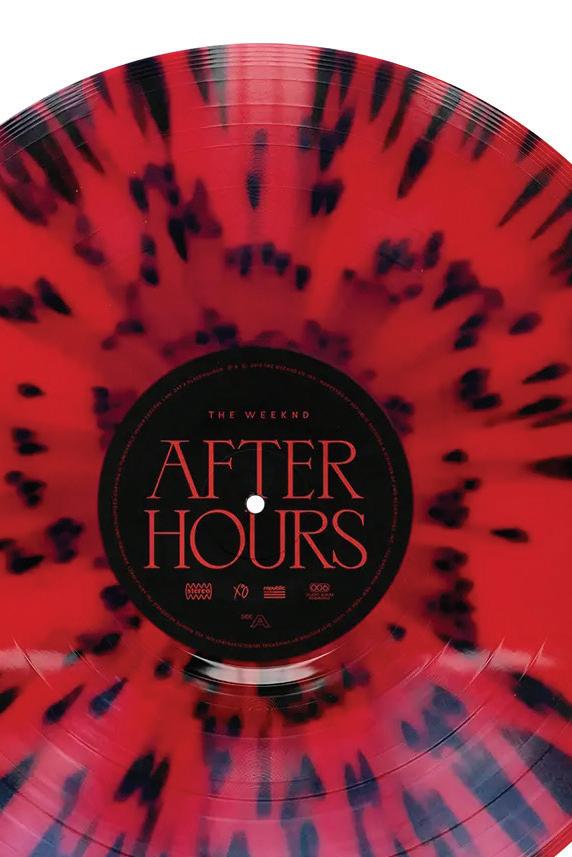
13
the reporter 13
Written by Carlye Mahler
Layout by Michelle Marshall
Graphics by Hayden Collins and Charlotte Holley
Photos by Reagan Shivers













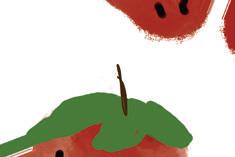

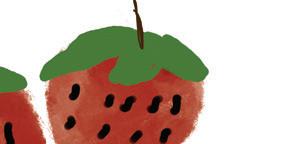
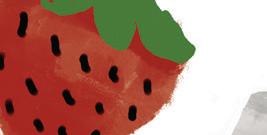
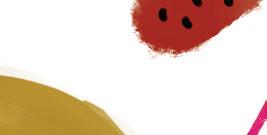



































If you find yourself wandering through the busy streets of Downtown DeLand on a Friday night, you’re bound to notice that a good deal of people are headed in the same direction: the vibrant Artisan Alley Farmers Market. The Artisan Alley website boasts that the weekly Farmers Market occurs “Rain or Shine” every Friday from 6 to 9 p.m. I had the pleasure of heading down on January 26, 2024 with the Reporter News Editor and photographer, Reagan Shivers, to get a glimpse of the vendors and shoppers milling around on a chilly DeLand night.
Like any other Friday night, we find the Artisan Alley Farmers Market is overwhelmingly populated with small businesses. While many
14 the reporter
consumers might regularly make purchases from larger corporations like Walmart, Forbes reports that 99.9% of businesses across the U.S. are small businesses, and nearly half of U.S. employees work for a small business. This means that 99.9% of businesses in America more closely resemble the vendors you’ll find
I just kind of wanted to look at what the Alley had to offer,
at the Artisan Alley Farmers Market compared to a larger company like Amazon. Running into some fellow Hatters decked out in Stetson merch presented the perfect opportunity to chat about what had brought them to the Farmers Market. Jaimy DeJesus ’26 happily motioned back to a free poetry writing vendor and emphasized the benefits of having somewhere to unwind, saying, “I kinda wanted a little time off, you know, from all the studying and stuff.” Jaimy explained that rather than coming to the event with a specific shopping list, they preferred to browse. “I just kind of wanted to look at what the Alley had to offer,” they shared.
Lucky for her, the Alley has plenty to offer. I spoke to Mel Holtzman, owner of Hot Pots Painting & Pottery, an artist who described her business by explaining, “I sell my own hand painted pottery. And I also do pottery parties around the city where people can paint their own pottery as well." When asked if she noticed the presence of Stetson students at the market, she smiled and reached for her pottery, commenting, “I sell a lot
of wine glasses to Stetson kids.” Robert Silfies described he and his wife’s business, Doggie Insurrection, by explaining, “You think of your mother making your Christmas cookies. This is kind of it but it's for dogs.” He followed up his sentiment by proudly displaying the homemade dog treats in a variety of fun shapes such as miniature pizza slices while their dog, Tiffany, happily wandered around the booth. Robert and Irene Silfies both emphasized clean ingredients and their own dogs' health as the major factors that had inspired them to start their small business—farm to table doesn’t just need to apply to food. Jennifer Gamenthaler from Udder Chaos Goat Milk Soap described her day as starting on a small farm with her 25 goats, explaining that she milks “about five goats a day” and makes her soap products using the fruits of her labor. Shopping for these handmade products at Artisan Alley is a tradition for many. When asked about how long they’d been coming to the Artisan Alley Farmers Market, Gamenthaler stated, “I'm on in my third year.” Holtzman had
she milks “about five goats a day” and makes her soap products using the fruits of her labor.
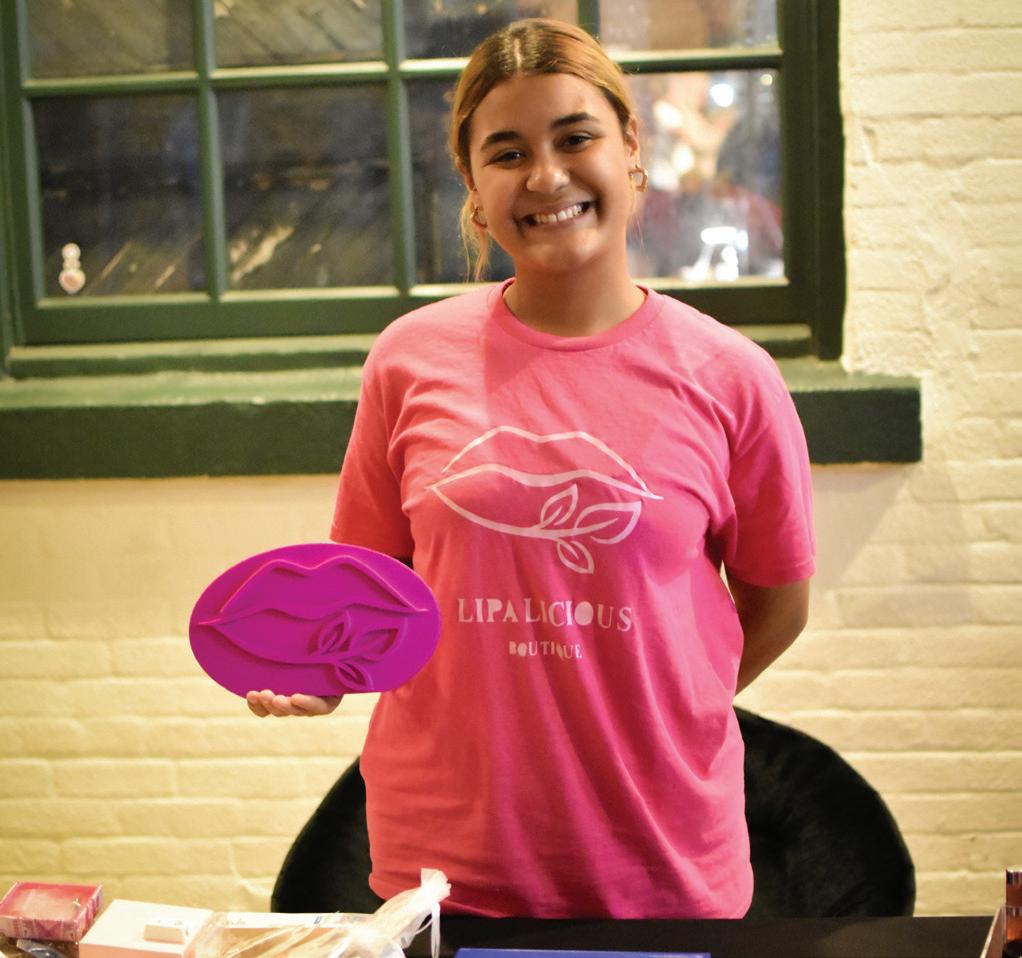
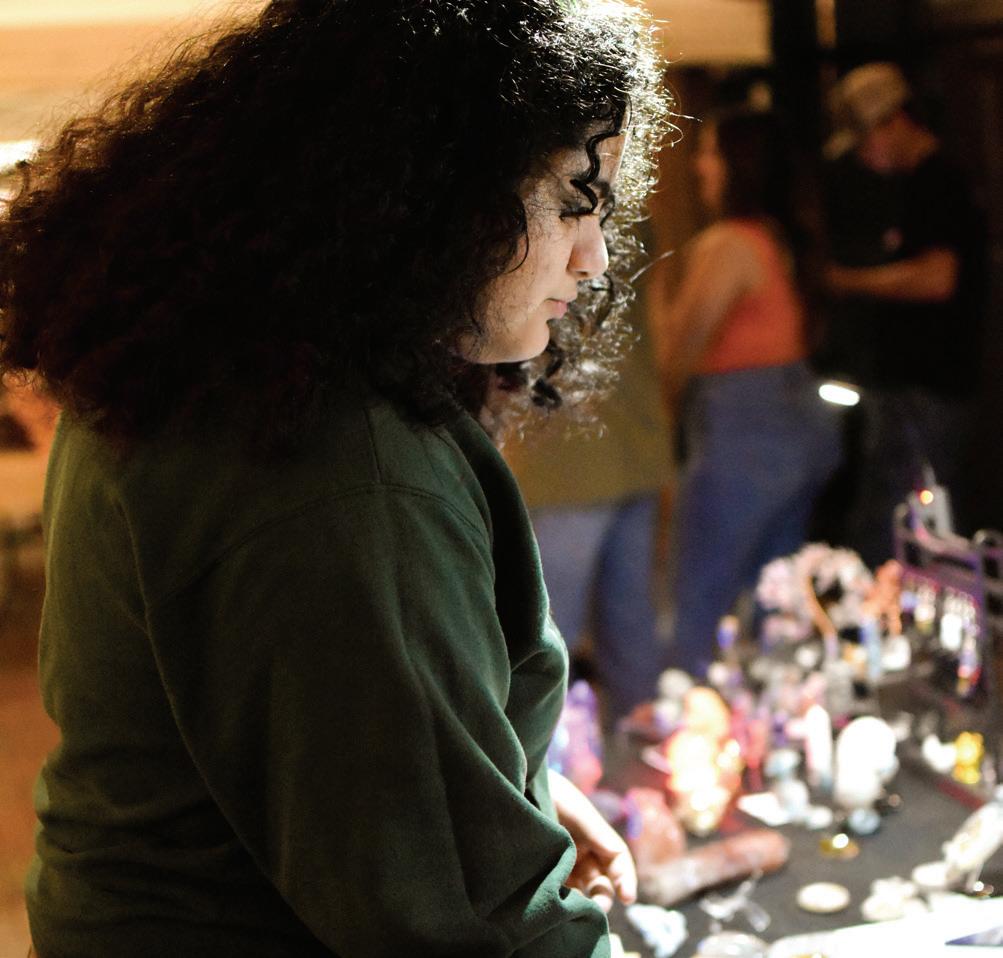
ALLEY FARMERS MARKET
ARTISAN
the reporter 15
similarly been coming to the market for a while, recalling that they’d been attending for “two and a half years.” Even student shoppers echoed this feeling. Jackie (Jacqueline) Toribio ’26 stepped away from their group of friends to tell me, “I usually do it every Friday. It's like tradition for me.” Stetson shoppers also stressed the value of the market in allowing them to support small businesses. “I try to come to the alley first before I go out and buy it on Amazon or some big chain, and most times they have it and I feel more positive that it's real, that I'm not being tricked, and it's always great quality,” said DeJesus, going on to jokingly point out that a lack of cash won’t stop them from spending on a sweet treat because “even if I leave my wallet, Apple Pay is there.”
Both Stetson students excitedly pointed me in the direction of one last booth to speak to, which led me to a current Stetson student’s booth. Rosaileen Vega ’26 runs Lipalicious Boutique while also pursuing a degree in Entrepreneurship and Professional Sales. Vega’s booth near the entrance was covered in products that she was eager to show off, going down the list of her multiple products of handmade “lip glosses, exfoliators, shea butter creams and rose oils. Also a new addition: cuticle oils.” Vega was sure to explain that her products have no flavor and no scent in order to prevent her customers from suffering allergic reactions. Lipalicious Boutique is a newer addition to the market, and Vega told me that this was her second time as a vendor at the Alley, but that she felt very welcomed by customers and neighbors alike, gesturing to the booth next to her and saying, “They are so friendly and I have had so many good opportunities talking to the clients and also my neighbors.” Stetson students should be sure to stop by and encourage a fellow Hatter putting her Entrepreneurship and Professional Sales lessons to the test. Vega remarked on the Hatters who had already visited her table by saying, “They were all bombarding my table. It
was really nice, the support; it was really nice.” If you want to make a purchase or stay up to date with any of the small businesses listed in this article, check out their websites or social media listed below.
T hey were all bombarding my table. It was really nice, the support; it was really nice.
Hot Pots Painting & Pott ery
Instagram: @melhotpotssanford
Website: https://www.hotpotssanford.com/
Dog�ie Insurrection
Instagram: @doggieinsurrection
Website: https://doggieinsurrectionco.com/
Udder Chaos Goat Milk Soap
Facebook: Udder Chaos by Lightning Bug Farm
Website: https://lightningbugfarm.com/
Lipalicious Boutique
Instagram: @lipaliciousboutique
Website: https://www.lipaliciousboutique.com/
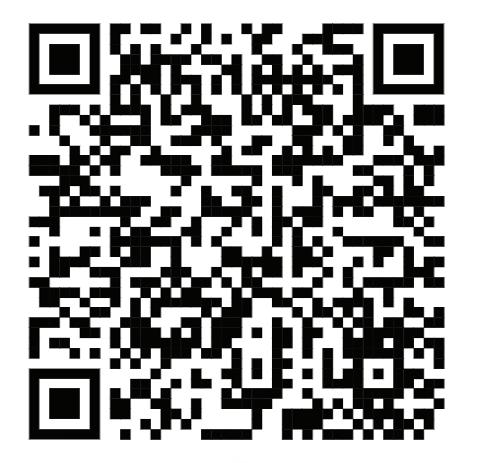
For more information, scan to visit ArtisanAlleyDeLand.com 16 the reporter





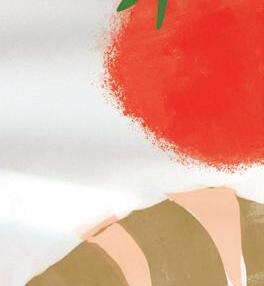









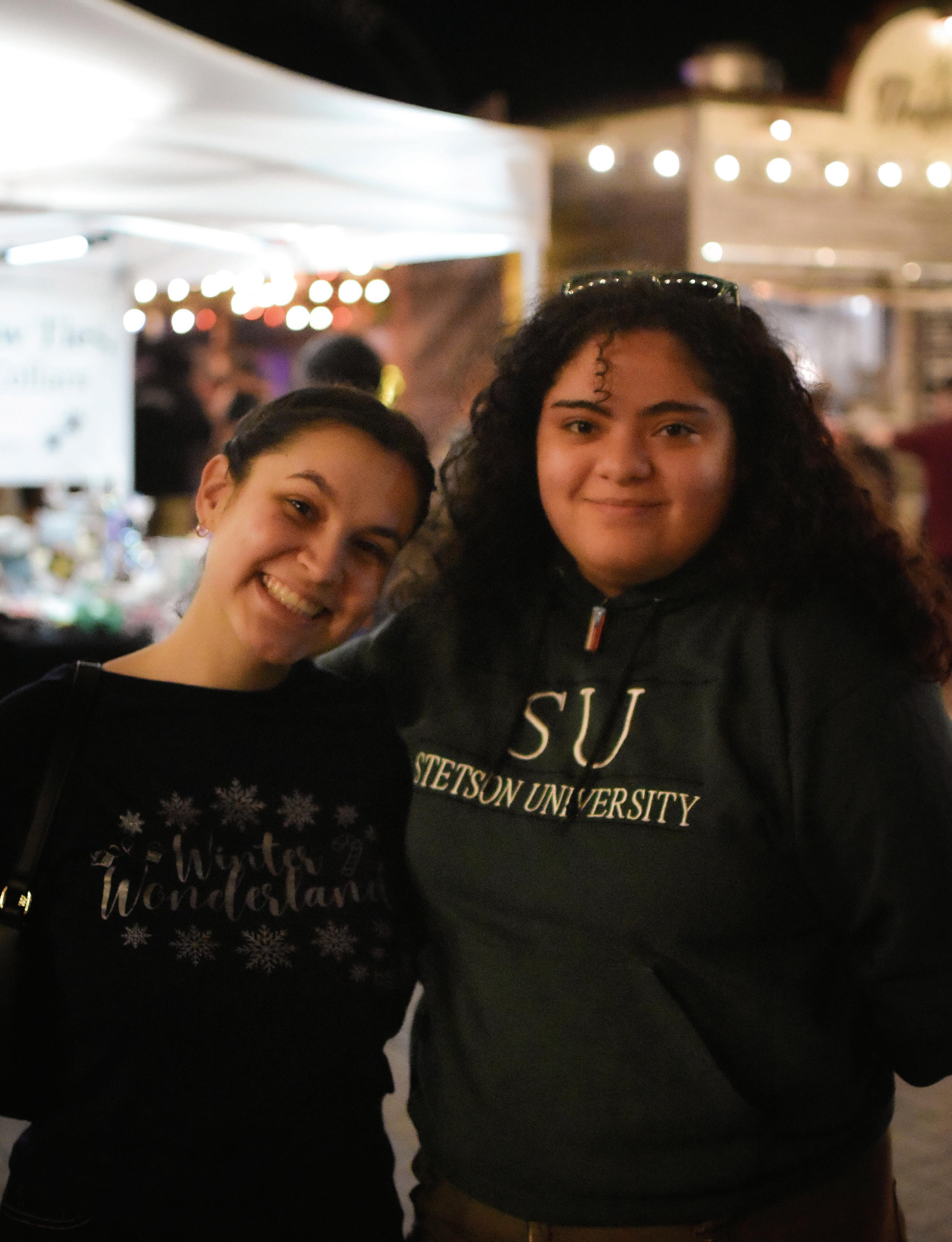


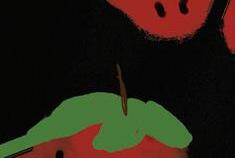
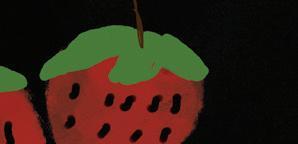
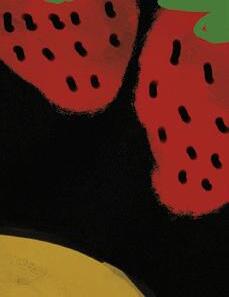








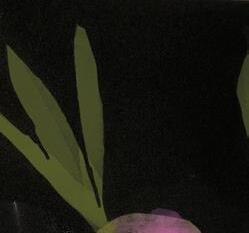


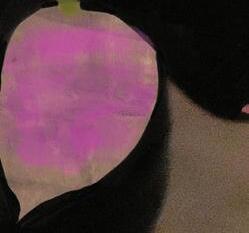
the reporter 17
ARTISAN ALLEY FARMERS MARKET
AMPERSAND AMPERSAND
18 the reporter
 Dr. Cramer with
Dr. Cramer with
AMPERSAND AMPERSAND
Cramer



I sat down with Dr. Sarah Cramer, Assistant Professor of the Sustainable Food Systems program in Stetson’s Department of Environmental Science, to dish on sustainability projects and campus consumption.

Q: What inspired you to study sustainable food systems?
A: Yeah, so my undergrad is in biology, and then my master’s is in public health. And as part of my master’s program, I had to do an internship out in the field, and I had an internship all lined up with the Department of Agriculture in the state where I was living in Missouri. And that fell through at the last minute, and I was kind of panicked. But my advisor said, oh, there’s this school gardening organization. They just got a huge grant, and they need help with garden education. And it was working at an elementary school, and I said, “Oh, I don’t really like kids. But I guess I can go do something.” And they said, “Oh, don’t worry, it won’t be a lot of like hands on work with kids.” But it turns out, that’s exactly what it ended up being was a lot of direct teaching kids in a garden. And long story short, I went on to work with that organization. For three years, I did a year of AmeriCorps with that same nonprofit. And then when I was ready to go to grad school for my PhD, I decided to continue studying garden-based learning in school gardens in an agriculture education program. So though I teach classes at Stetson, about the food system, more broadly, and sustainable food systems, my personal kind of focus is still on garden-based learning, whether that is in an elementary school, in college or in the higher ed in prison program.
the reporter 19 Written and Photographed by Reagan Shivers Layout by Hayden Collins Graphics by Indya Mkcoy
Q: What role does experiential education play in your courses at Stetson?
It is, I like to think that’s the centerpiece. I try to incorporate experiential learning every chance I can. Because I think it is the thing that makes abstract knowledge, you know, book learning, actually matter to students and actually stick in their brains. And so the things that are most challenging to me are when I’m teaching in, like an online environment during COVID, or other times when we’ve had to teach in different ways. And we lose that connection to hands-on learning. So for example, this semester, I’m teaching a class about school food. And so the experiential part of that class is students actually go observe a school lunch at a local elementary school and write about that experience. I teach a practicum class where we garden in the Brown Hall teaching gardens every week, they do 30 hours of community engaged learning with a local farmer or food bank or other entity in the food systems, there’s a ton of experiential learning in that. And then I also teach a class this semester, that’s using our new teaching kitchen. So I don’t like lecturing, I don’t like standing in front of a class, I feel like all of the pieces that kind of build up to the experience are the most important. That kind of structure is what I like most about teaching, is getting students to the hands-on experience. And then we reflect about it and we talk about how it fits in with all of the other knowledge out in the world. But that’s the centerpiece of it.
Q: Do you have any current projects on campus that you work with students on?
Yeah, I work with Hatter Harvest, I’m the advisor of Hatter Harvest. And then also, I’m a beekeeper. And so we have one beehive right now on campus, but we’d like to have more. We had some trouble with them in the last couple of years. So helping students learn about beekeeping. I teach an FSEM that I’ll teach again this coming fall. It’s all about honey bees and beekeeping, and then I supervise senior research projects that are often very sustainability focused. So, for example, I just had a student who graduated in December, who did her whole project on campus food waste. So those are the main ones that I’m kind of involved in right now. And then obviously, using the garden in the kitchen and trying to be as sustainable as we can, composting things from the kitchen being intentional about not wasting food.
20 the reporter
Q: What tips do you have for students who want to practice sustainability on campus?
My go-to is always to just take less food in the CUB. Every time I have a student work on food waste, they talk about these horror stories of like full sandwiches being sent back on the conveyor belt when they send their dishes back, like fruit that hasn’t been touched, desserts that haven’t been touched. So, I know that it is amazing to be able to take whatever you want in a free choice, style, cafeteria, but you can always go back and get more if you want more. So there’s a lot of issues in the food system that an individual action isn’t really the solution. So for sustainability in the food system overall, things like political activism, voting, working for really like, systems level change, those are those are really, really big challenges. But food waste is really one where your individual actions do make a big difference. And so just taking less food in the CUB, but being intentional about meal planning. If you’re going grocery shopping, using up the food in your refrigerator before you go and buy more. And then, absolute last worst case scenario would be, you know, composting things that are left. So we want to not lean on composting as a way to excuse using or not using all of our foods. So figuring out how to consume the food that you actually buy. That’s my one go-to in the food realm. And then I think another piece of that is really learning more about where your food comes from. Food is expensive to grow. It’s labor intensive to produce. It’s really resource intensive to get to us. And so the more we know about and appreciate all of the effort and labor and energy that goes into that, I think the more intentional we can be with our consumption.


























































































Calling all artists and art enthusiasts! Join us at Hatter Networks Maker Mart, an event dedicated to showcasing student artists and fostering entrepreneurial skills. Support our local arts community and snag exclusive Maker Mart 2024 merchandise on April 19th in the Stetson Room. See you there!
19th April / Stetson Room
11-2 pm
Student vendors / free tote bags
the reporter 21
the reporter 21
Written by De’Vanese John-Baptiste Layout and Graphics by Maria Latour

Girl Dinner :Dishing on the Trend Digesting

From chamoy pickles to PINK sauce, “Girl Dinner” is one of the latest social media trends to reach our palettes. Whether it’s a snack board, your favorite comfort food or leftovers from the night before, Girl Dinner is not the typical entree. For Stetson student Esther Colston ’25, Girl Dinner, “always involves pickles. There’s always going to be multiple pickles in Girl Dinner.” As an infrequent social media user, she was not too familiar with the trend. Consequently, she has questions about its purpose, and she is not the only one. Sarah Lingo, a visiting Assistant Professor in the Communication and Media Studies Department, questions if we can situate Girl Dinner historically. Meanwhile, Stetson Counseling’s Dulce Barrera has certain concerns in common with certified physician, Suzanne Villalobas, who questions the validity and scope of the conversations surrounding healthy eating that have emerged from Girl Dinner. So, what is Girl Dinner and what questions should we be asking ourselves about it?

Voicing the Unspoken:
Girl Dinner originally appeared to transcend traditional meals, by encouraging viewers and participants to showcase eclectic food combinations. It was the perfect attention-grabber for those who might be intimidated by the idea of cooking over the stove after a long day, as the trend highlighted low-effort, but substantial meals one could scrape together quickly. However, as time went on, the videos trending under the hashtag for Girl Dinner seemed to exceedingly feature single items or scraps of food. As the nourishment provided by the Girl Dinners showcased on Tik Tok began to decline, social media users, with Stetson students among them, began to give voice to the uncomfortable 22 the reporter
the reporter
22

elephant lurking in the corners of Girl Dinner’s small plates. Girl Dinner appeared to be a reminder of how social media can encourage maladaptive eating and competitiveness surrounding calorie consumption.
While we can not know the individual motivations for users who choose to get online, dangle a slice of cheese, and call it Girl Dinner, for young women and girls brought up on period pieces filled with corsets, Barbie, and too many other indicators of the beauty standard to mention, it does appear to be a competition. What is a greater display of femininity than winning this trend? The “girl” is right in the name. Unfortunately, the audience competing for the prize are preying on harmful ideas on femininity. Stetson Counseling’s Dulce Barrerra laughed as she described centuries old photographs and renditions of cavemen feasting while the women eat minimal portions. This is not to say body consciousness does not affect men. In fact, reflecting on it, Esther Colston expressed that, “For men, their ideal body type, what they’re told they need to be is big and strong and like, abs and everything. And then the way that women are told that they need to be is they need to be skinny, they need to be like ‘supermodel thin.’ So I think it’s similar, but in different ways.” While both ideas are harmful, the pressure to be “supermodel thin” might not only fuel disordered eating– it can cause nutrient deficiencies with long-term health consequences.
they need to be like supermodel thin.“ “
Stetson’s Director of the Domestic Violence, Sexual Assault, and Stalking Prevention Grant, Sara Smith, shared that she does not think “men think about their food intake near as much as women. I think so much of the dieting dieting behavior stuff is marketed towards women.” This is supported by the statements of Stetson History major, Nicole (Nico) Alonso ’26, who, as she reflected on Girl Dinner, shared her thoughts on its successor, “Boy Dinner.” She compares it to
Girl Dinner by sharing, “Instead of eating less for the sake of eating less, it’s like an entire rotisserie chicken.” She goes on to quip, “ I don’t know how many servings are in a rotisserie chicken, but I know it’s not one.” Although Girl Dinner may be a trend, body consciousness and beauty standards will outlast it. During its run, Girl Dinner has placed a spotlight on how harmful ideas of beauty and femininity have made meal time a different experience for men and women. Sarah Lingo, a visiting Assistant Professor in the Communication and Media Studies Department, thinks we need to situate Girl Dinner historically. She recognizes, “It’s not something new, even if there are new things about it.” Lingo sees Girl Dinner as having emerged from existing diet culture and its intersection with internet culture. She notes that sharing what you eat, especially how much or how little, “seems to be a consistent theme across time,” whether it be on older platforms such as LiveJournal and Tumblr, or new ones like Instagram and Twitter. A striking part of this food culture in Lingo’s experience has also been women online “opening themselves up to surveillance and surveilling other people,” in terms of their food intake and meal choices.
While those glamorizing disordered eating under the guise of Girl Dinner may not intend to cause harm, Sara says, “I think they know what they’re saying-I think you know, that’s not healthy. And you said it as if it were a brag. You’re promoting it.” Such promotion could have a negative impact on those struggling to discern between healthy and unhealthy eating habits. Esther Colston shared that she thinks, “People should be more educated on those decisions so that they’re making educated choices.” Bettering nutritional education to be more accessible could be one solution.

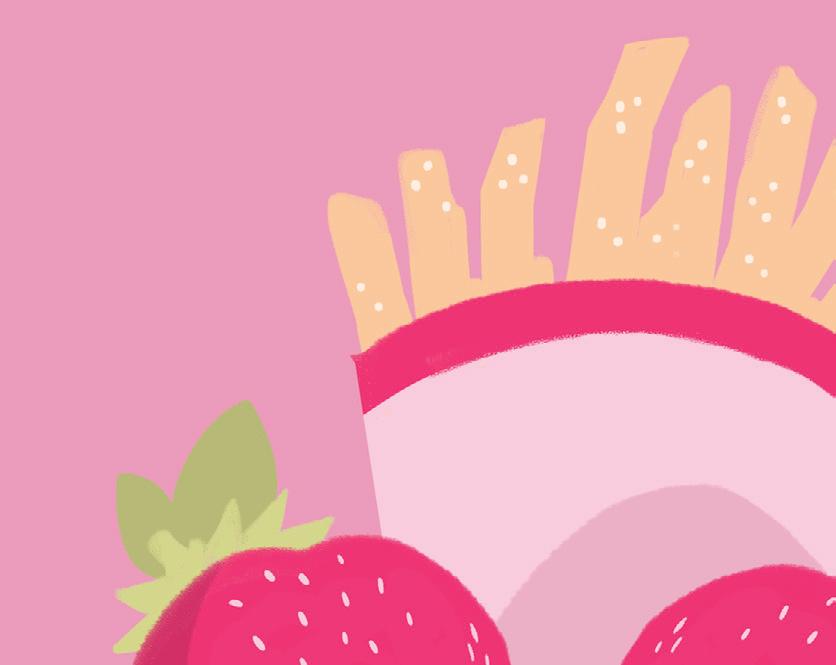

the reporter

the reporter 23
Peeling Back the Leafy Greens:
Suzanne Villalobas is a certified physician-assistant with AdventHealth Medical Group and a valued member of Stetson’s Health services. Having graduated from Purdue University with a bachelor’s degree in nutrition, she was able to share some general tips and ingredients for stressed college students to get in their meals. “Anything with the protein and the carbs is an awesome dinner. For a lot of stressed college kids, I think eating every three or four hours is really reasonable. My basic nutrition speech is five fruits and veggies a day, protein and carbs every three or four hours, and some kind of dairy or something that has calcium in it a couple of times a day.”
While Suzanne was able to shed light on healthy eating, Counseling’s Registered Mental Health Intern, Dulce Barrera thinks that changing the culture around food consumption actually starts at home. She knows that, “Not every family introduces healthy food options to children at a young age. So [when] you’re thinking, ‘my child’s gonna create an unhealthy eating habit based off of what they saw.” Dulce wants parents to ask, “did they know it was inappropriate because you told them in your home?” She goes on to share her belief that it is in the best interest of

goes
a child for a parent to be the first person instilling healthy eating habits in them. Lingo had similar thoughts, although she points out that some of the language and learned ideas we have about food might be generational, as there are parts of her eating habits she thinks mirrors her grandparents. Some are even learned by nonfamilial influences, as her partner’s adventurous eating has rubbed off on her. Reflecting on different child/guardian dynamics and the various sources that warp our behavior both in childhood and adult life, it is best to say that changing the culture around food consumption starts with community.




When those healthy eating habits are not instilled by the community, what or who should we be judging? Is it the responsibility of social media platforms like Tiktok to take down harmful content? Legally, not really. Hidden in their overviews as a disclaimer the company shares, “Although we work hard to enforce our rules, we cannot guarantee that all content shared on TikTok complies with our Terms of Service or Community Guidelines.” The site’s Community Guidelines explicitly bans showing or describing “extremely low-calorie” meals or diets. However, it stipulates these meals have to be daily, and even more ambiguous, they need to be “associated with disordered eating.” Which brings to the forefront a question posed by Dulce about some of her own judgements of meals she has seen posted under the Girl Dinner trend, “Is that appropriate to censor it if it’s not what that person’s intentions are? Because that’s our perception.” In a larger context, this “meal” is only a snapshot into someone’s day and if you’ve had a large lunch, you may not be in need of a large dinner. At any time of the day, two similar people may not need the same amount of food to feel satiated.







What might be healthy for you might not be healthy for someone else. And what might not be healthy for someone else might be all that they have.


“
24 the reporter
In fact, Girl Dinner may be affected by plenty of things beyond the pantry. Trying to compromise her beliefs with the validity of the criticism she has seen and heard of Girl Dinner, Dulce offers, “What might be healthy for you might not be healthy for someone else. And what might not be healthy for someone else might be all that they have.” For instance, Lingo’s grandfather, who thought fruit was an essential part of the diet, was raised by parents who survived the Great Depression. It was typical for him to prepare the available canned fruit with the heavy syrup it came soaked in. While nutritionally this may be equivalent to eating a can of sugar, her grandfather was doing the best he could with what he had. Some Stetson students have admitted that their Girl Dinners might not always be voluntary, but are sometimes the consequences of their financial situations. Nico Alonso says that sometimes with her financial situation in mind, dining services like Doordash or going out and stocking up on groceries seems unfeasible. With this in mind, she has to get creative with some of her meals. With all of these factors influencing what gets on our plates, what space should Girl Dinner take up?
Taking Responsibility Off Our Plates:
Sara Smith thinks that in perspective, “It’s not like I’m like, avoid Girl Dinner posts. I just think the difference in the toxic parts need to be pointed out, if left unchecked, and untalked about, then it’s a problem. If we talk about these differences in perception, and maybe perhaps the intent versus impact, then I think it’s okay.” We can not know what factors lead to the assortment on others’ plates or what their intentions may be when they upload videos to the internet, but we can establish boundaries. Social media has permanently bonded us all together, but when the next trend surfaces, our hunger to participate can overshadow our consideration for the potential audience. Although Tiktok may call their codes of conduct “Community
Guidelines,” it’s important to remember that community should be more tangible than pixels on our screens. My advice is to accept and be accepted by a community that makes eating intuitive, something you do not have to think about. Balance the health of meals, with accessibility, and most importantly, a healthy relationship with food. Most of us aren’t nutritionists and it is ok to eat food imperfectly, like we do everything else, just try your best. Building off of this, do not be afraid to block hashtags for your peace of mind. At the end of the trend, we are strangers sharing a moment in time and the most authentic connection between us is likely the WiFi signal. Laugh at what suits you and eat what fulfills you.
if left unchecked, and untalked about, then it's a problem. “ “
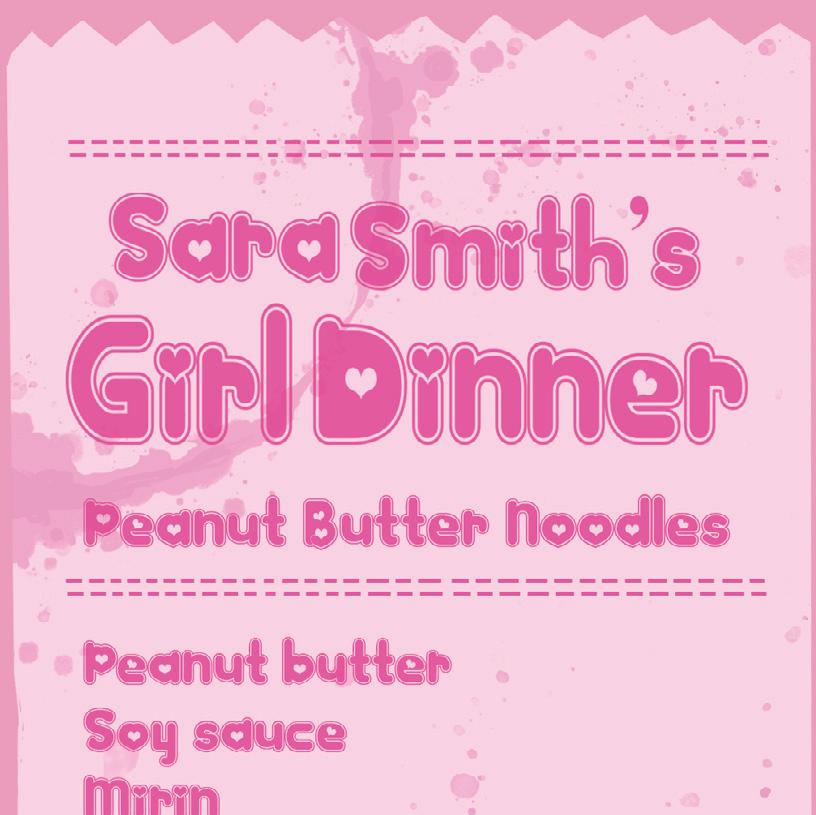

the reporter 25
Please seek professional help if you or someone you know is struggling with disordered eating. National Association of Anorexia Nervosa & Associated Disorders (ANAD): The Helpline +1 (888)-375-7767 the reporter 25
Written
Marshall
In his 16th year at Stetson, Dr. Tom Vogel serves as chair of the Mathematics department and is well-respected for his expertise in mathematical physics, specifically differential and partial differential equations. “I love mathematics, and I love helping people,” he says, reflecting on his decision to become a math professor. His
“ I LOVE MATHEMATICS , AND I LOVE HELPING PEOPLE ,”


engaging and patient teaching style is loved by many students around campus, where he shows a commitment to both academic excellence and mentorship. This dedication extends to his personal life, where Dr. Vogel combines his love for numbers with a strong passion for personal wellness.
26 the
reporter
and Photographed by Abby Denton Layout and Graphics by Michelle
WEIGHTLIFTING
“At some point, everyone steps back and does some self reflection and makes the decision as to what to do to cope with life’s challenges. For me, I decided to go to the gym and I began weightlifting. And I loved it. And then years went by, and I loosely stuck with it, until about five years ago, when I made the decision to focus on being consistent and being what some people would possibly consider insane about it. I started going five days a week in a very dedicated way, and I still go four days during the week and even Saturday and Sunday. I find that, for me, it’s about waking up in the morning feeling good. But another part of it is it’s one of the ways I center myself. So, it’s as much about the mental benefits as it is the physical.”
REST

PESCATARIAN DIET
“When I was 19 – and I’m 47 now – I stopped eating beef, pork, and poultry. Instead, I eat a lot of fish, eggs, dairy, and cheese. With this path of my diet, came the challenge of trying to eat high levels of protein without eating meat. I do a lot of food prep on the weekends, which helps me get through the week. So when I call my diet thoughtful, I guess that’s what I mean, I actually have to reserve time to think about not just what I’m buying or what I’m going to make, but also the time it takes to actually make it. I’m proud of several of my dishes that have evolved over the years. One such dish I make is an outstanding quiche, which I make crustless, but am able to get about 300 grams of protein in through the eggs, spinach, and cheese.”
PROTEIN
“Aside from the exercise, of course, a solid sleep schedule and diet is crucial. The sleep aspect is often overlooked by many people, I think. Because it’s hard. It’s often outside of our control, whether it be stress, commitments, or work, you know, whatever it might be. But, at the end of the day, sleep is really important if you want the results that you’re trying to get in the gym to actually manifest.”


“I admit, when it comes to eating at work during the lunch hour, I sometimes do eat foods that are protein rich, but are overlyprocessed. Yes, while I do often bring the quiche, I do absolutely love Lenny and Larry’s cookies, for example. And the truth is, while a meal would be a better option, it’s a darn good substitute. I also frequently bring protein shakes and protein bars, which because I don’t eat chicken, are very easy items to lean upon to still reach my protein goals.” “I also enjoy, what I consider, my own take on chicken salad. It substitutes mayonnaise for Greek yogurt for higher protein, and I use fruit to imitate the chicken… which surprisingly tastes a lot like chicken.”
the reporter 27















“... IF YOU WANT TO SEE A POSITIVE CHANGE IN THE WORLD , YOU START BY DOING IT YOURSELF .”
COOKING & CONSUMPTION







“I’ve been cooking since I was a kid, and it is something I enjoy very much. I consider myself a hobbyist, but through this hobby I have learned that I don’t like food waste. I really try my best to avoid it. And that can be difficult because I live on my own. I try my best to cook in a way that allows leftovers to be actually used. And in that sense, sometimes lunch becomes creative. It was only a couple of weeks ago that I made a shepherd’s pie using a pea protein substitute for the meat, which I was able to enjoy for lunch for a couple of days. I mean, clearly it’s easier to keep something which is portable and able to be put in a container — nothing too fancy. So, I really try to focus on leftovers and the intentionality of my lunches that I build on the weekends. It’s inevitable that there will always be some small amount of food waste, but I personally think people in general could do better. And, I guess, if you want to see a positive change in the world, you start by doing it yourself.”
28 the reporter
Written by Alondra Y Rivas-Jimenez, Emma Weis and Ciara Kelley Layout and Graphics by Hayden Collins
Dear Reader Segment
Question by J dan Hanstein
’27: How do you think social media usage has affected you/ the people in yo life?
Dear Reader,
My experience on social media has been curated to the niche communities I’m a part of on the internet. Specifically within certain apps, such as X, Tumblr and TikTok–those apps are heavy on the curated home page. These apps are the easiest to engage and lose ourselves in scrolling.
In this new day and age, social media has the power to really modify the content you see and have access to. A lot of websites now allow you to block words and individuals. I do not think you should be scared to take advantage of this feature, especially if social media is making you feel inadequate! Social media should be a positive space for you to share your posts and keep in contact with your friends.
Social media keeps me in contact with people I don’t see on an everyday basis. It’s great to be able to send a TikTok and watch people’s stories. It has made me better at staying in contact with long-distance friends and keeps me up-to-date with everyone else.
Alondra Y Rivas-Jimenez ’27
Question by Alexan ia Metivi
’26: What e the must- y dishes cuisines unique to the ea?
Dear Reader,
I definitely remember many nights when I was wanting something a little different than home cooking, but also not quite craving Commons cooking either. Luckily, Downtown DeLand is only a short walk away from central campus and offers a pretty good collection of cuisines. From Italian to Vietnamese, the downtown strip houses a plethora of fine dining and casual options for students, family and faculty alike.
Personally, I am partial to Asian cuisines and DeLand’s Oudom Thai and Sushi is family-owned and packed with sushi and vegetarian options. Not to mention, just past the downtown strip is another great sushi place, The Twisted Chopstick. A bit of a larger venue than Oudom, Twisted Chopstick has a lot of innovative sushi and poke options, one of my personal faves being the Foxy Lady. Plus, both places have cooked options as well as soups and appetizers for family and friends that may be a little less adventurous. And if you like fish and veggie
the reporter 29
dishes like me, I would highly recommend Santorini for some family-style Greek cuisine. Though, I acknowledge that as a college student, eating out isn’t always the most sustainable or affordable. So, if you and a few friends want to explore DeLand away from campus but don’t necessarily want to have a full-blown sit-down meal, I know my go-tos are any coffee or breakfast spots. I am personally partial to Trilogy; all their coffee is ethically sourced and freshly roasted. The space is right outside the Farmer’s Market downtown and provides a perfect study or catch-up spot. The venue even goes so far as to exhibit Stetson student art during certain months. DeLand also houses some great local bagel and donut shops, like Mr. Bill’s whose location makes fresh donuts daily.
Overall, Deland is definitely worth exploring if you have the time and resources. Make a day out of it; grab a friend or venture solo! The downtown strip offers a pretty good collection of cuisines and local small family-owned restaurants that offer discounts and welcome any Stetson student willing to stop by!
Ciara Kelley ’24




























Question by An ea Mingo ’24: Wh e can I find student discounts when shopping online?
As students, we’re pretty familiar with being on a tight budget– especially at the end of the month while buying groceries or indulging in some retail therapy. Don’t worry, though; in this era of technology, we can save a fortune and still treat ourselves to purchases that make us happy!
Two popular online websites ( also available as apps) are Student Beans and UNiDAYS – my personal life savers! Student Beans and UNiDAYS provide deals on their websites exclusively for students for various brands and retailers running from clothes, to books and even a new phone.
If you need some new shoes or even a 20% off coupon to finally afford that Grammarly account to improve your writing, they should be your go-to! Before accessing the deals, you must log in with your current student email, which you can verify via your university.














Both Student Beans and UNiDAYS have large databases of partner sites with discounts in many categories, including but far from limited to fashion, beauty, technology, food delivery and entertainment. The apps of both sites allow you to carry coupons in your pocket, and you’ll never be denied the chance to buy something because your coupon has expired!





Next time you want to go on a shopping spree or just to save some money at your favorite places, go to Student Beans and UNiDAYS to score the best deals both online and in stores! Your wallet will thank you later.
Happy Shopping!
Emma Weis ’24
30 the reporter

the reporter 31
Written by Emma Weis
Graphics by Cristal Sherman
Layout by Hayden Collins


Social media is a great way to share my life with my friends– to post that book I’m currently reading, my morning coffee or just any activity I want my friends to see. However, if you’re like me, you’re looking for an app to post your insignificant moments without paying regard to the like count– wishing it could be eradicated entirely. Luckily, I stumbled upon this app just in the nick of time, almost letting it slip away unnoticed.
One day, I received a few text messages from my friends saying, “we need this” with a link I was unfamiliar with–only stating it was an “Early Access Invite.” I don’t know about you, but I immediately thought it was a scam link that just kept coming from my closest friends. When I asked what it was, one of my friends, Amy McGee ‘23, explained,”It’s called lapse; it’s basically BeReal but with an old fashioned camera that “develops” your picture and then posts it like an old photo from a digital camera. I don’t really know, I just kept getting sent it so I joined!”
circle. It gave me more freedom with my posts knowing only a select few will be able to view.
I joined to see if it was an app that could be sustained long-term or if it was another fad similar to BeReal. Here’s my thoughts…

I was skeptical. However, curiosity got the better of me, and I decided to give it a try. To save you the newbie confusion, I wanted to share my experience with Lapse so you can decide if it might be the right fit for you!
First I looked into the mission statement to understand what Lapse is all about. Lapse isn’t just another social media app. Co-Founder, Dan Silvertown, in an email statement to TODAY.com stated, “We designed Lapse as a camera to encourage living in the moment and sharing memories pressure-free. We’ve seen a rapid rise in popularity due to the fact that young people are craving a platform that’s focused on sharing moments with friends, not on influencers or celebrities.” This makes it feel like it’s a deliberate departure from the culture of overconsumption.
What immediately caught my attention was the profile set up. While similar to other apps, it was just more exciting and able to capture more of your own personality.



They hope that by removing likes and followers they might be able to foster a more authentic and intimate experience, free from the pressure to impress. In my experience, I found that the app felt like a more safe and welcoming environment– I wasn’t posting for anyone but myself and my close
Your profile consists of a bio, a profile picture, five emojis that best represent your personality and a photo montage of your favorite moments. “ “
Once you click on my profile, you’ll immediately see a montage of my favorite memories with the song Counting by Hamdi and Princess Superstar (it’s a little cocky, I know, but the song is catchy!) and a bio stating, “welcome to the chaos” – short and sweet but yours can be up to 100 characters. I adore the use of emojis, music and a bio. The multiple ways to alter your profile is a great way for your personality to shine through on this platform.









32 the reporter



One of the most tedious aspects of the app is the “Darkroom.” Lapse’s darkroom is a section of the app where your photos “develop” similar to a disposable camera. Lapse’s darkroom holds your photos for an unspecified length of time until you receive a notification that your photos have developed. Until then, you have no idea what your photo looks like, which adds a sense of nostalgia I appreciate. I found that the delayed development process helped me focus less on getting that perfect photo and rather capture raw images of memories I wanted to savor, removing any editing from pictures and even captions.


Lapse, in my opinion, is a space where mundane moments are celebrated– a space to post that picture of your coffee, your dog and just about anything you want. “ “

While I had thought this app was initially a spam text, I was partially correct. The sign-up process felt as such. Unlike other social media platforms where you only need an email, username, and password, Lapse, in addition to those requirements, also forces you to send the invite to five contacts on your phone before they open the gates of Lapse to you. It was a hassle to send it to friends. It got a bit finicky, as my immediate friends were already on the app and I couldn’t send it to them. However, Lapse, in a recent update, has done away with this feature so you can easily access Lapse without recruiting five friends to join you.
For me, Lapse is still a great way to curb the appetite for posting on social media without second guessing if a picture is “post-worthy” or will get enough likes because it is an app consisting of “friends, not followers,” as the app’s slogan states. While it is definitely an app that has entered my rotation of apps to scroll through in my free time, it is not an app designed to steal your screen time–
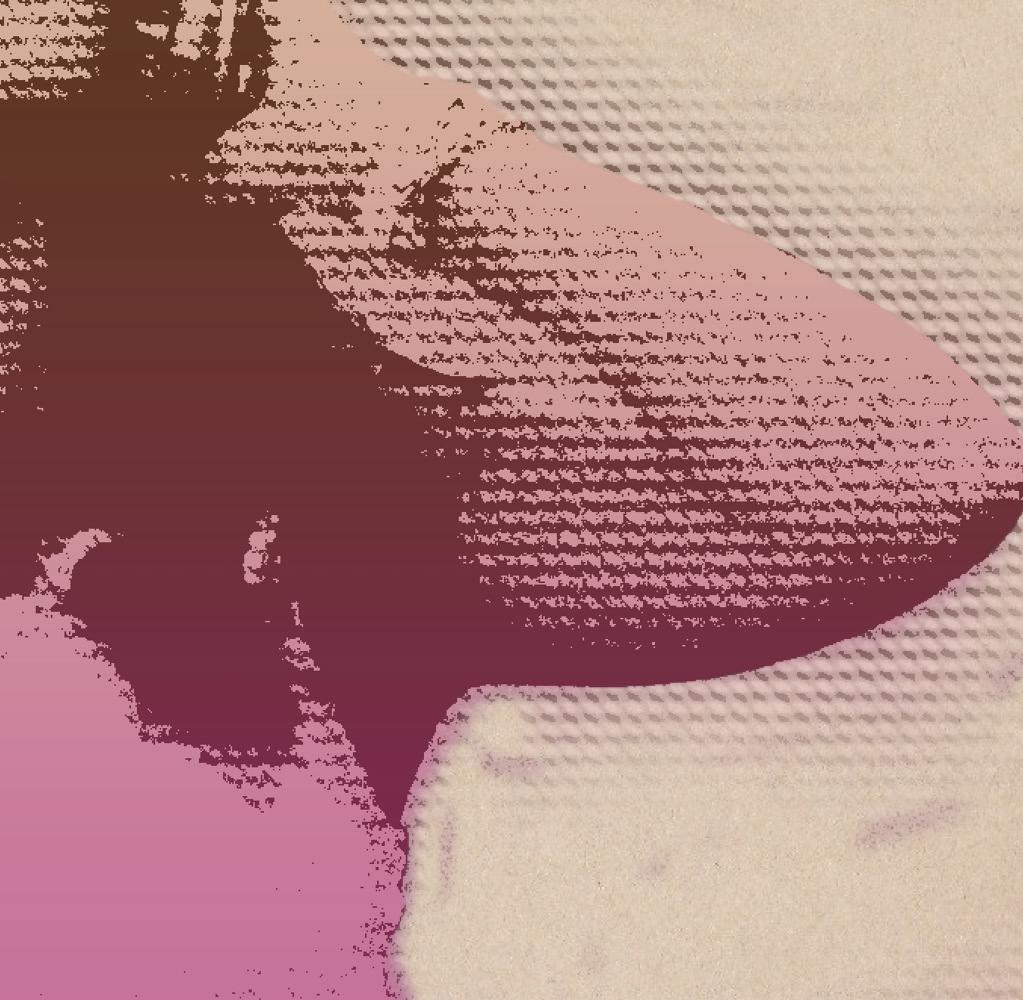


Lapse, in my opinion, is a space where mundane moments are celebrated– a space to post that picture of your coffee, your dog and just about anything you want.
I found Lapse to be a great place to share photos with friends that I didn’t necessarily want to be on my Instagram page.

Lapse celebrates the memories you want to capture without putting them in a public media environment. It places the social back into social media… as long as you can convince five friends to join with you first.

the reporter 33
Written by Hayle Morgan Graphics and Layout by Maria Latour
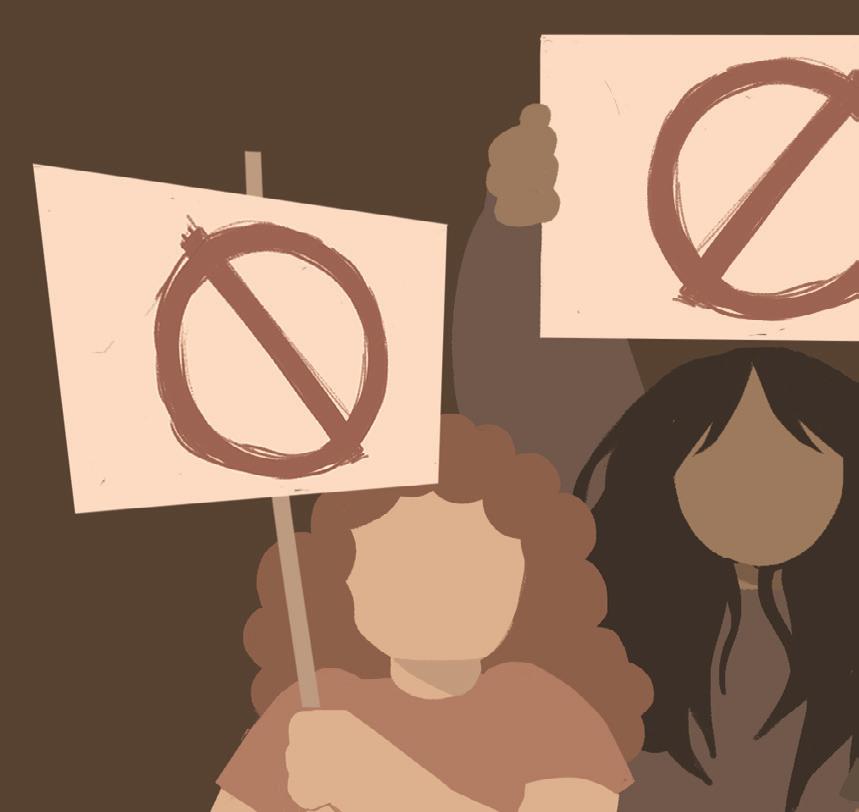


Boycotts
:the poweR of the non-consumeR
The consumption of a product or service tells businesses a lot about what consumers want. Similarly, the lack of consumption of a product or service tells businesses a lot about what consumers do not want. Lack of consumption translates to low profit, which is antithetical to what any proper business wants. To fix this, businesses will make changes to meet consumer’s wants; this is the kind of logic that drives a boycott.
According to Merriam-Webster Dictionary, to boycott something is to, “-engage in a concerted refusal to have dealings with (a person, a store, an organization, etc.) usually to express disapproval or to force acceptance of certain conditions.” Boycotts are different from labor strikes in that they involve the average consumer/civilian taking a stand rather than an employee from the offending party. The topic of boycotting has become even more relevant in recent months due to the still ongoing Israel-Palestine conflict.
While the issue at the heart of this conflict goes back a long time, eyes from around the world have been stuck on Gaza since this past October. In that time, Stetson University has held a couple of on-campus cultural-cred-
it events discussing the situation such as flash panels and Dr. Paul Croce’s Values Day Workshop. The controversial conflict has spurred reactions from almost all corners of the world, with a good number of them passionately crying for a ceasefire. In a poll done by Reuters/Ipsos in November of last year, it revealed that 68% of Americans want a ceasefire. Many from this percentage have been prompted into protesting but are also boycotting companies with ties to or have shown support for Israel. This, of course, sees them not buying anything from the company and encouraging others to do the same. Among the targets for these boycotts are Starbucks and McDonalds. The former came under fire as a result of the company trying to distance itself from a Pro-Palestine post made by a union of its workers, Starbucks Workers United, and putting out the statement: “We unequivocally condemn these acts of terrorism, hate and violence, and disagree with the statements and views expressed by Workers United and its members.” McDonald’s started to face scrutiny after its franchise in Israel announced that they were handing out free food to the Israeli military; it should be noted that McDonald’s in Israel are managed by local owners and operators. The purpose behind boycotting these Israel-associated companies is to hurt them
34 the reporter
financially enough to cut ties with Israel in the conflict and to see less harm come to Palestinian civilians caught up in the crossfire.
A Short Overview of Boycotts in America:
Despite the Irish origin of this phenomenon’s coinage, boycotts have also been featured in the annals of American history. During the American Revolution, boycotting was a favored resistance method amongst colonists against Britain’s policies and taxation laws. Another boycott of great significance in American history was the Montgomery Bus Boycott. Sparked by the arrest of Rosa Parks after she refused to give up her bus seat to a white person, the boycott was aimed at desegregating buses in Montgomery, Alabama. The boycott was successful as it led to the U.S. Supreme Court to declare that the city’s segregation laws were unconstitutional and helped to establish the foundation for the Civil Rights Movement.
Dr. John Carrick, Associate Professor of Management at Stetson University, gives us a more recent example in history. “Nike, over the years, has faced several boycotts,” Dr. Carrick explained. “They’ve gotten better in recent years, but especially in the 90s to early 2000s. They got in trouble for their contract manufacturers using child labor. The vast majority of Nike’s manufacture is done by contract manufacturers. Well, it came to be that a lot of these contract manufacturers were doing things they absolutely should not have done, most notably using child labor.”
Boycotting in The Age of Streaming and Social Media:
With the internet came two technological inventions that helped to shift the way boycotts are done. Those inventions are none other than social media and streaming.
Social media platforms like Tumblr, Twitter and Instagram allow people from all over the world to connect with each other. People are able to more effectively organize their efforts, grow their numbers and are also able to pass on valuable information to their fellow activists. Because of social media, boycotting has become a much more streamlined experience with many boycotts originating on social media. For example, Bud Light was
targeted by a conservative boycott for collaborating with transgender TikTok star Dylan Mulvaney for a social media marketing campaign.
Written by Reagan Shivers and Carlye Mahler Photos by Reagan Shivers Layout by Maria Latour
Streaming platforms like Netflix and Hulu provide consumers with access to content and the freedom to consume it anytime. Conversely, consumers also have the freedom not to engage with a piece of media on a streaming platform. Unlike the television or radio where viewers had to follow a set schedule, streaming offers flexibility that enables users to support one piece of content media over another.
Thanks to streaming, there has been more awareness amongst consumers about the impact of their consumption. This is best seen with music industry fans, especially within the context of stan culture. These fans, who want to see their favorite artist succeed, come to know that consuming an artist’s work on streaming platforms translates towards that artist’s success in the music industry. As a result, devoted fans take a zealous approach to streaming their fave’s music. Boycotting, in this context, sees music fans take the inverse approach where they stop streaming an artist’s music as a means to hold them accountable when the artist is found to have done something that is deemed to be offensive and unacceptable. For example, in 2020, Canadian rapper Tory Lanez saw a 40% drop in streams as a result of listeners boycotting him after Houston rapper Megan Thee Stallion confirmed that he shot her in the foot.
Awareness about the impact of consumption influences what pieces of media a streamer chooses to consume and what they choose to boycott. An example of where this comes to be in association with social media is the Noah Schnapp situation. In the days following the October 7th attacks and start of the Israel-Palestine conflict, the 19-year-old Stranger Things actor expressed sorrow for the loss in life in Israel and support for the country. However, he faced criticism that later intensified when he posted a video of himself laughing with friends, handing out stickers saying ‘Zionism is Sexy’ and ‘Hamas is ISIS’.
Following Schnapp’s actions, there was and continues to be earnest talk online amongst viewers and fans of Stranger Things about potentially boycotting the long-awaited final season of the show. This comes after its much talked about and record-breaking fourth season. The talk was so evident that it seemed to spur Schnapp into addressing the entire situation in a video posted to social media. “I only want peace and safety and the reporter 35
the reporter 35
security for all innocent people affected by this conflict,” he spoke in the video. Noticeably, this video was posted around the time that the final season of Stranger Things was beginning production.
A Business Attitude about Boycotts:
Businesses can feel the impact of boycotts. This can be seen in a letter posted to LinkedIn by Mcdonald’s CEO Chris Kempznski where he commented on the Israel-Palestine conflict, the boycotts and how the boycotts are impacting the business. He wrote: “Our hearts remain with the communities and families impacted by the war in the Middle East. We abhor violence of any kind and firmly stand against hate speech, and we will always proudly open our doors to everyone.” In that same letter, he also wrote: “I also recognize that several markets in the Middle East and some outside the region are experiencing a meaningful business impact due to the war and associated misinformation that is affecting brands like McDonald’s.”
We can get a more in-depth perspective from Dr. Carrick. “That’s never a good thing for business to be a target
”RefeRRing back to the nike boycott, DR. caRRick conveys that nike haD to spenD much of theiR money in aDDition to Dealing with pR anD haD to cReate a whole DepaRtment to essentially police theiR contRact manufactuReRs.
executives and managers are going to have to spend a lot of time on that and that’s not productive time,’’ Dr. Carrick explains. Referring back to the Nike boycott, Dr. Carrick conveys that Nike had to spend much of their money in addition to dealing with PR and had to create a whole department to essentially police their contract manufacturers.
Explaining what steps needed to be taken by a company being boycotted, Dr. Carrick said “If they are the target of a boycott, they need to address the underlying issue, they need to understand what the issue is, they need to understand why the issue is there.” He went on to say, “And then, they need to understand what percentage of their customers who are part of the boycott. Because oftentimes, with a boycott, it’ll be a small group. And if that’s the case, you can’t make everyone happy.” Dr. Carrick continued to highlight the significance of the number of customers boycotting when it comes to the effectiveness of a boycott: “It’s not that they want to ignore the boycott. But they’re probably not going to put the effort into it that they would, let’s say, if 60% of their customers supported the boycott.”
So what if a company refuses to listen in face of massive boycotts and continues to stick to their guns? “So if that’s the case, then they have to understand what the potential ramifications are, in terms, okay, we might lose a certain percentage of business,” Dr. Carrick explained. “They need to clearly communicate with all their stakeholders. So they need to make sure they communicate with all their stakeholders why they’re staying the course, why it makes the most sense for them, and then it has to go back to some rationale. And usually, that rationale needs to be linked back to the company’s values and terms of why they’re justifying not making any changes.”
”of a boycott,” said Dr. Carrick, “More than that, they’re going to have to use resources to deal with it, and those resources could presumably be used elsewhere for more effective purposes.”
Among those resources that a company uses are marketing and public relations. “The biggest amount for them and for most companies is the marketing and PR. There’s also indirect costs, most notably the time of key people. So, anytime there’s a boycott of significance and it’s having a decent impact on a company, the CEO, the CMO,
36 the reporter
Anti-Boycott Laws and Their Implications:
Boycotts have been shown to be inherently political expressions that have helped craft the United States of America into what it is today. This makes the existence of antiboycott laws so strange. These laws exist to prevent participation in foreign boycotts that the United States government doesn’t support. One of those foreign boycotts is the Boycotts, Divestment, and Sanctions (BDS) movement, a global movement formed by Palestinians to pressure Israel to follow international law in its conduct with Palestine. This movement, which these ongoing Pro-Palestine boycotts are a part of, faces heavy opposition from Israel and its allies with them
36 the reporter
”
”accusing the movement of antisemitism. The movement is so opposed that there are Anti-BDS laws– laws that restrict boycotting Israel and that are specifically aimed at opposing the movement. To be clear, these laws won’t force you to buy a frappuccino from Starbucks. Rather these laws work to forbid American businesses and individuals who have business contracts with state governments from boycotting Israel or refusing to do business with or in Israel. There are U.S. states, such as Arkansas and California, that have passed antiboycott laws. But there have been cases where such laws have been blocked in federal court due to being found in violation of the First Amendment.
“
No matter what side a person takes with the Israel-Palestine conflict, the heart of the matter is that these anti-boycott laws carry heavy implications for future boycotts. Critics of antiboycott laws point out that it has the potential to set a dangerous precedent in limitations of public speech and claim that it has inspired the legislation of other antiboycott laws regarding other issues. Among these alleged anti-BDS inspired laws is a law that was passed in June of last year by the
to be cleaR, these laws won’t foRce you to buy a fRappuccino fRom staRbucks.
Boycotting is the radical act of intentional nonconsumption. It is radical because we are living in a time where there are so many different ways to consume. Netflix, Instagram, Uber and Amazon are just a few ways to show how consumption is at our mere fingertips. It is radical because boycotting takes the purchasing power of average citizens into potent political power. Boycotting asks us as consumers to take responsibility for our consumption habits and the effects that it has on our society.
boycotting is the RaDical act of intentional nonconsumption.
” “
state of Alabama that prohibits the state from making business contracts with companies if they don’t submit a written certification confirming that they do not boycott another company over it failing to provide gender-affirming care or reproductive health benefits. Boycotting, as shown with the Montgomery Bus boycotts, has the ability to allow marginalized groups of people to access political capital, and stand against oppressive institutions. This type of empowerment is significant and is rare for many to access through anything else. Having such empowerment be restricted takes away the opportunity for the common man to challenge the status quo.

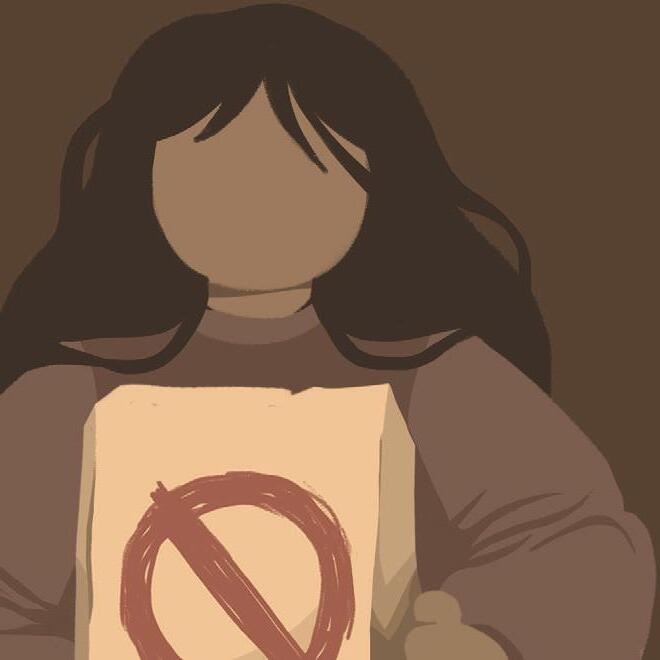
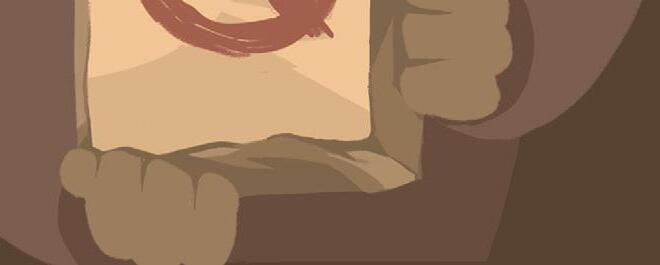
It is not uncommon for boycotters to take their business elsewhere when boycotting. You could look to local businesses in your town to buy desired products. For instance, if you were a Stetson student who usually got their fix of Japanese mochi from Amazon and then started to boycott it, you could get your mochi from the local oriental store in Downtown DeLand. In this way, you’re not only depriving your target from making a profit off you, you’re also contributing to the local economy of your community.
the reporter 37
the reporter 37

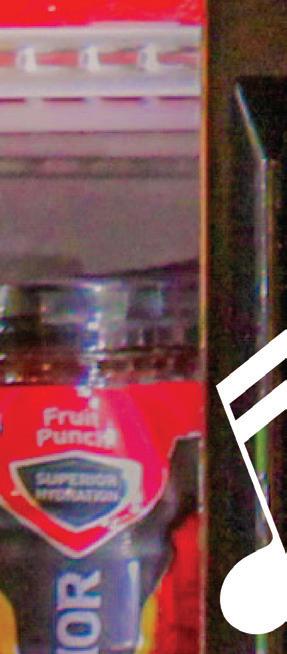
38 the reporter


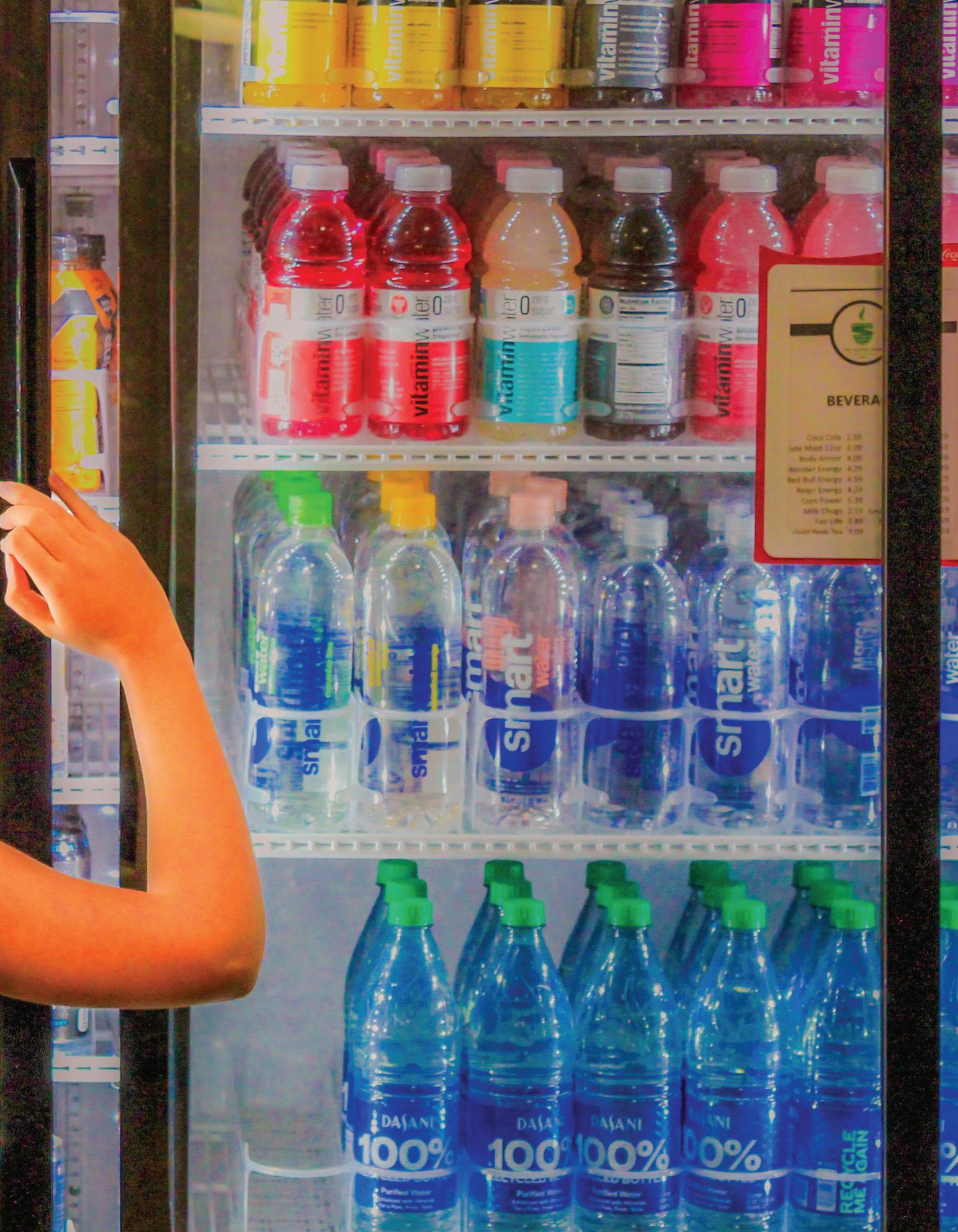



Shop n’ Bop Shop n’ Bop ‘





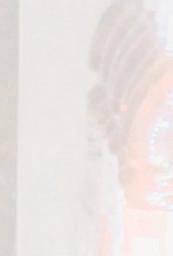
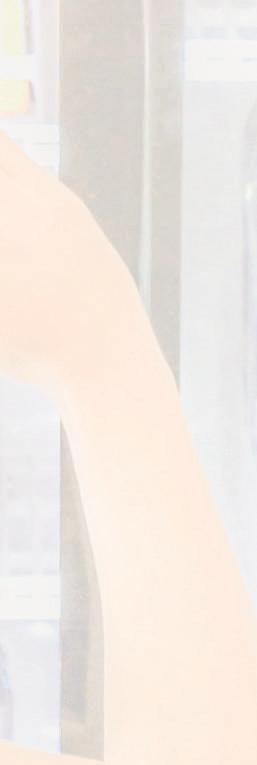












The writers and editors of the Reporter have a tradition of including a playlist along with each magazine issue. The songs on the playlist reflect both the theme of the issue and the mood of the team while creating this issue. This page includes a selection of the songs on the playlist; head over to Spotify to listen to the full playlist.
Thrift Shop – Macklemore & Ryan Lewis feat. Wanz
What Was I Made For? – Billie Elish
XS – Rina Sawayama
Material Girl – Madonna
Parasite - Samantha Mahler
Dance The Night – Dua Lipa
That’s What I Like – Bruno Mars
Good Thing – Kehlani and Zedd
Lip Gloss – Lil Mama




Thumbs – Sabrina Carpenter
I Love It – Icona Pop
Free – Natalia Kills









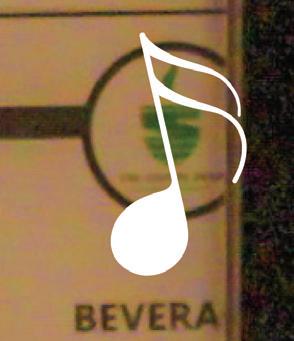















the reporter 39
Curated by Alis Cadena and Carlye Mahler Layout and Photography by Hayden Collins Edits by Indya Mkcoy

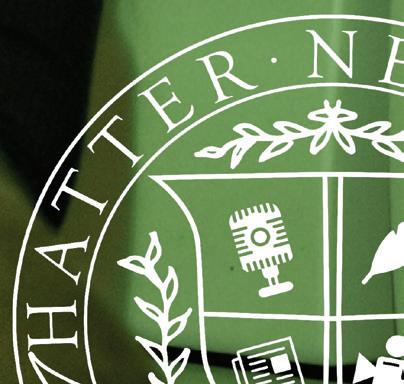
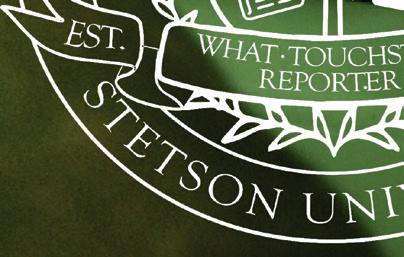




























































































































 Cas Bradley Editor-in-Chief
Alis Cadena Executive Editor
Carlye Mahler Managing Editor
Reagan Shivers News Editor
Hayle Morgan Fact Checker
Hayden Collins Creative Director
Cas Bradley Editor-in-Chief
Alis Cadena Executive Editor
Carlye Mahler Managing Editor
Reagan Shivers News Editor
Hayle Morgan Fact Checker
Hayden Collins Creative Director


































































 Left: Jasmine Bakhsh (’26)
Left: Jasmine Bakhsh (’26)



 Written by Sara Ward
Designed by Maria Latour
Written by Sara Ward
Designed by Maria Latour















































































































































 Dr. Cramer with
Dr. Cramer with





























































































































































































































































